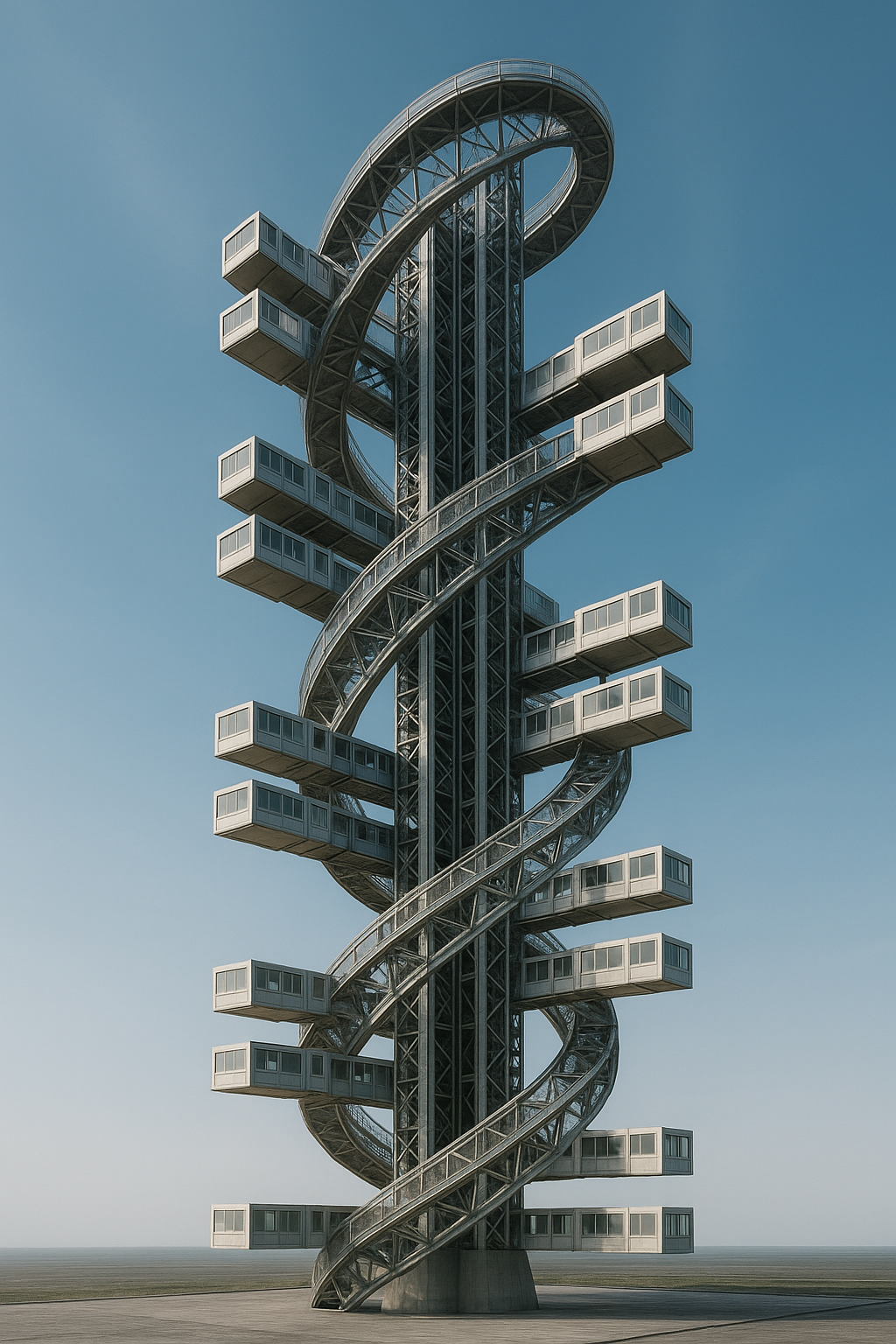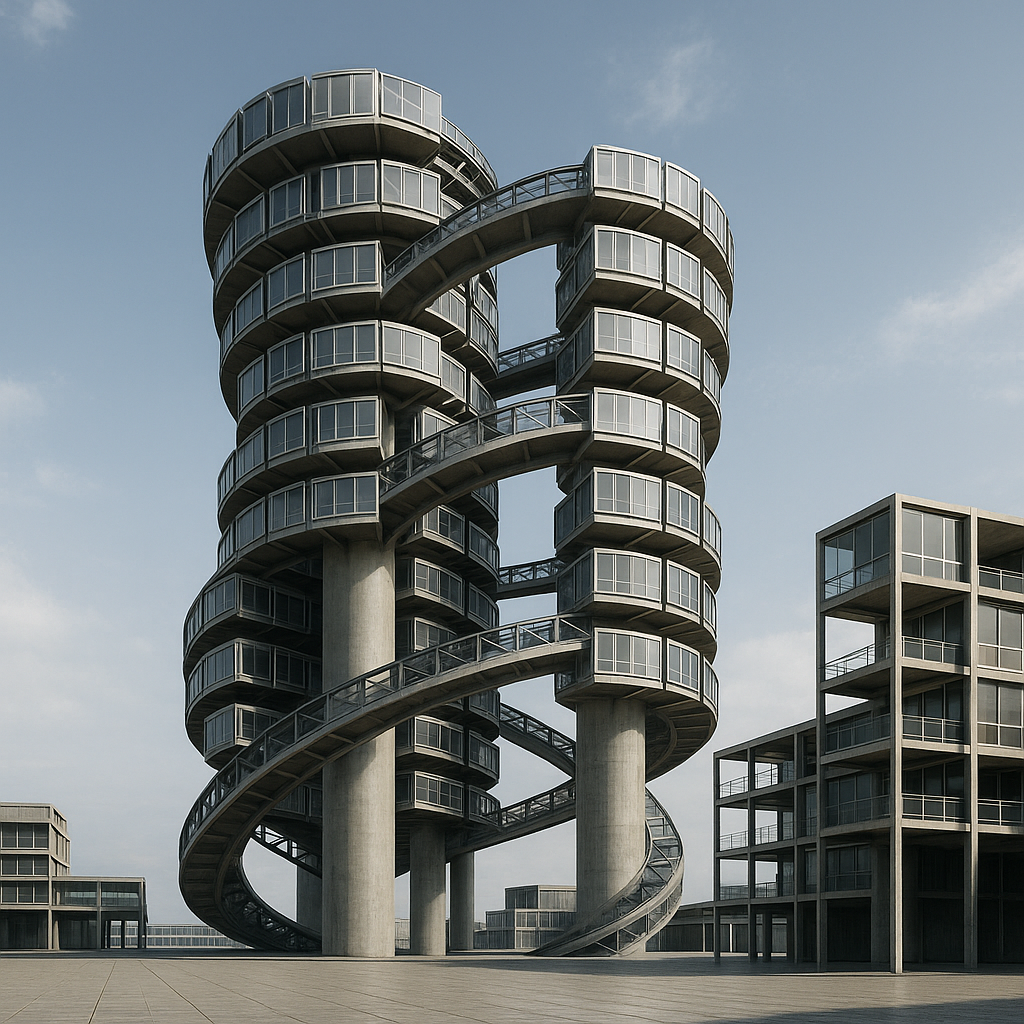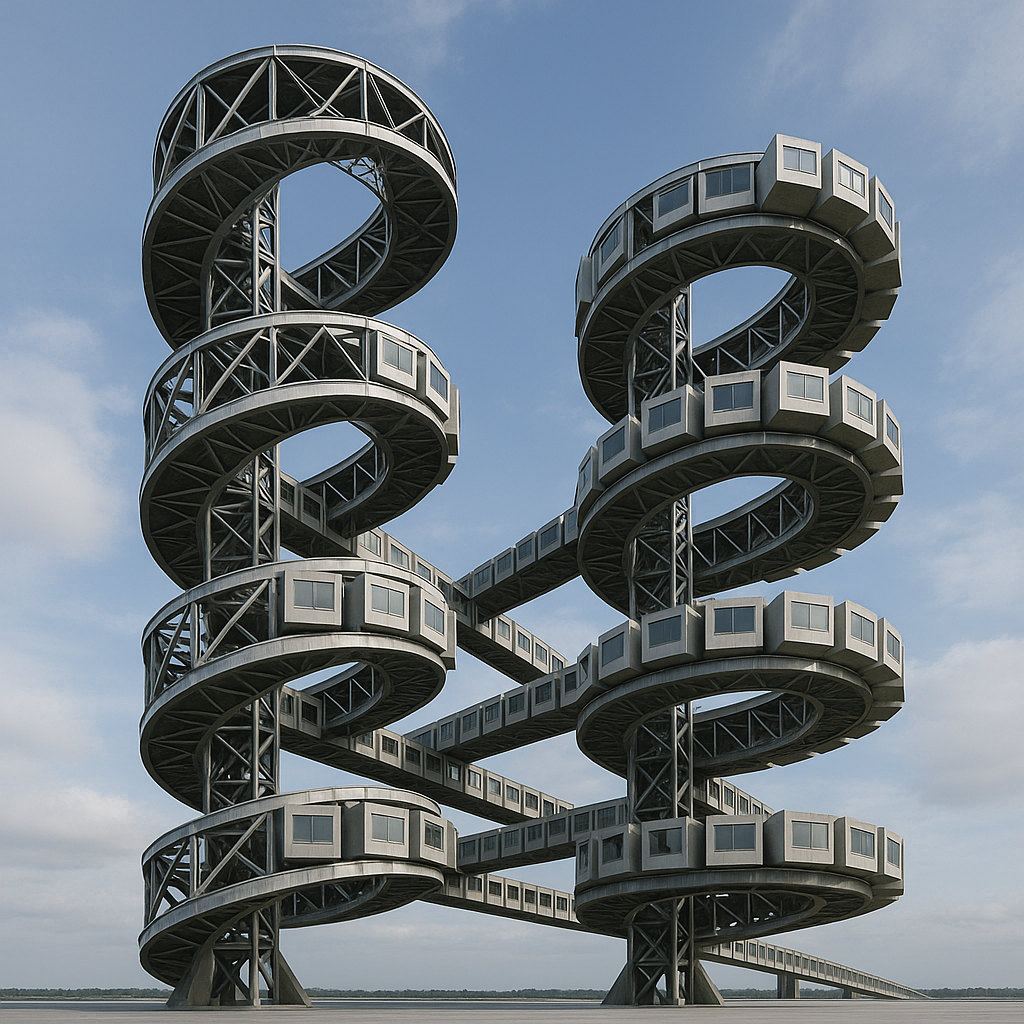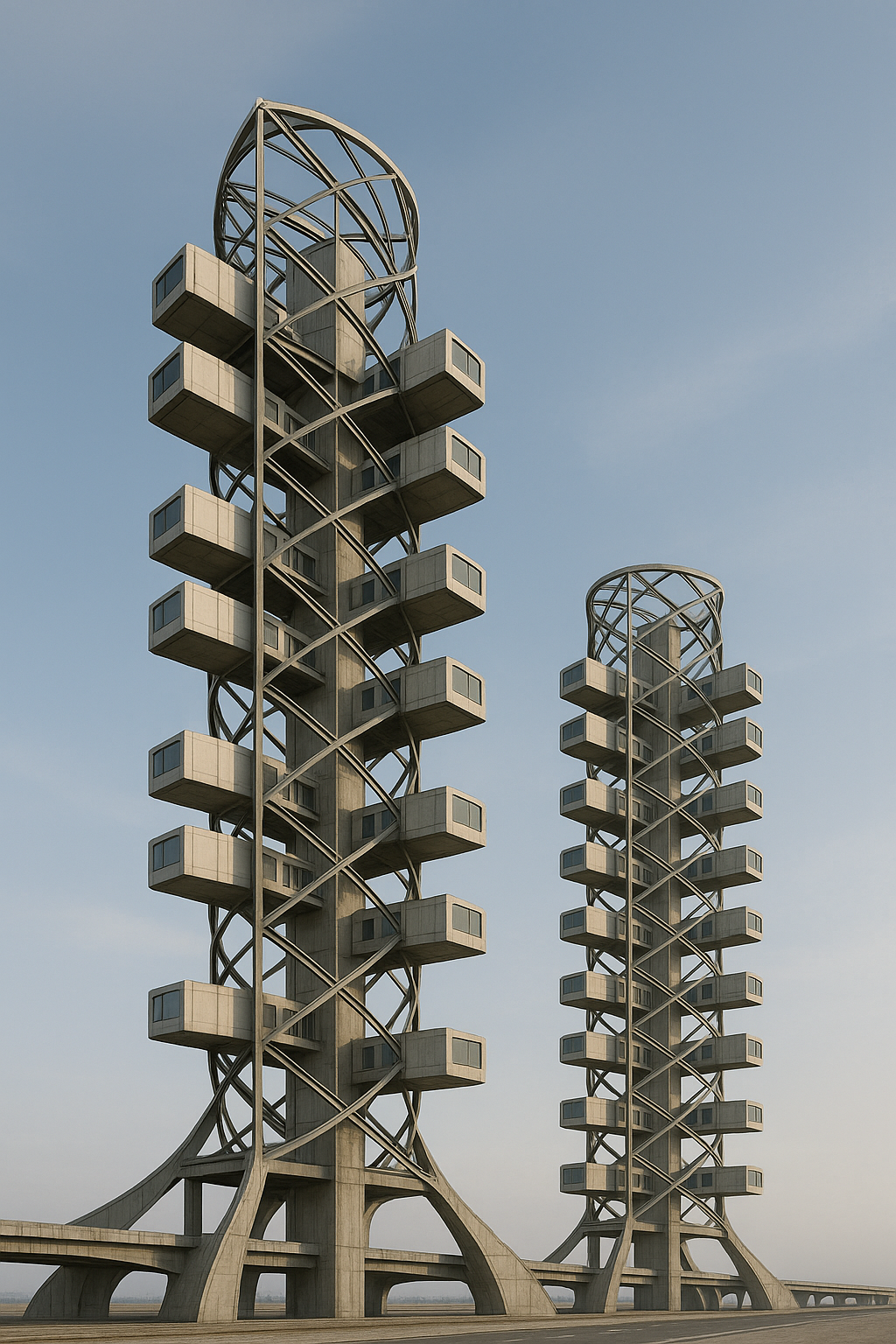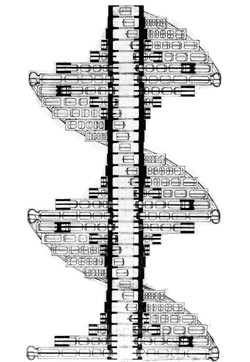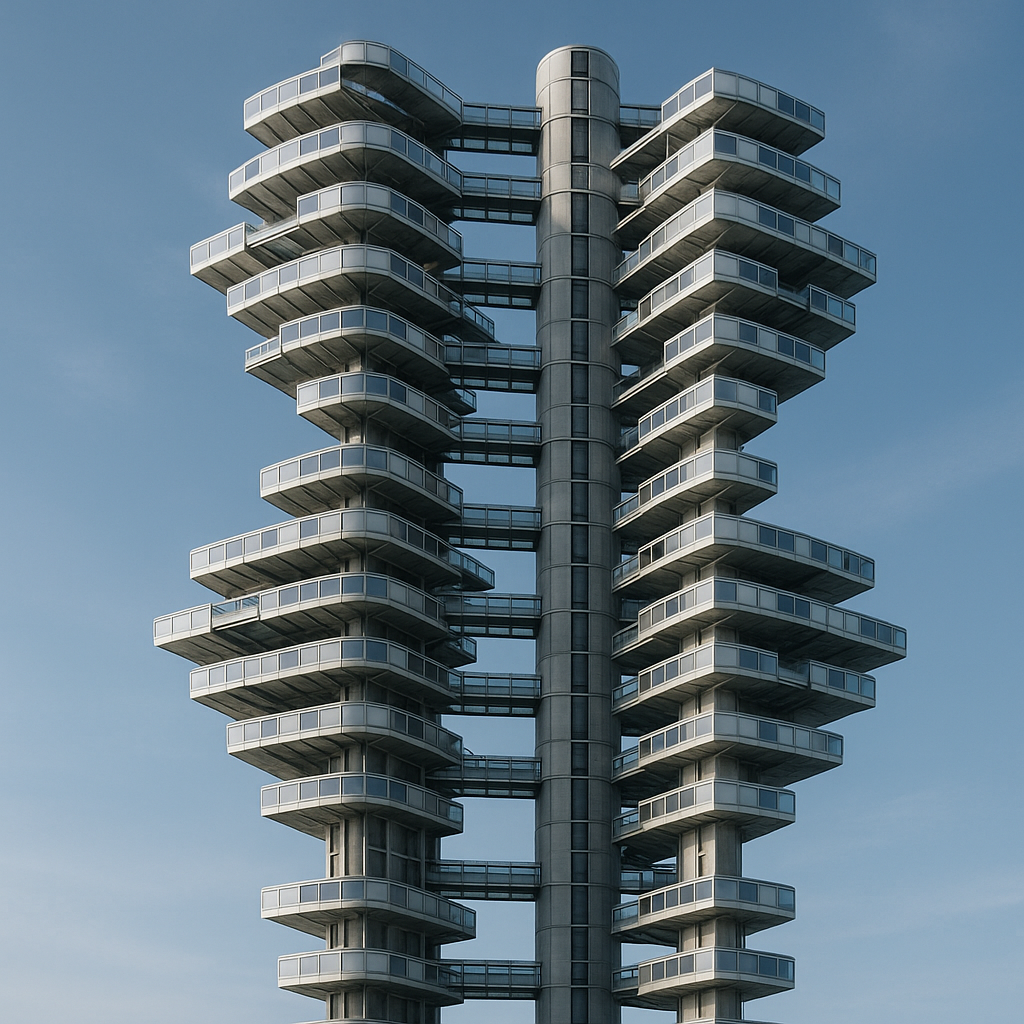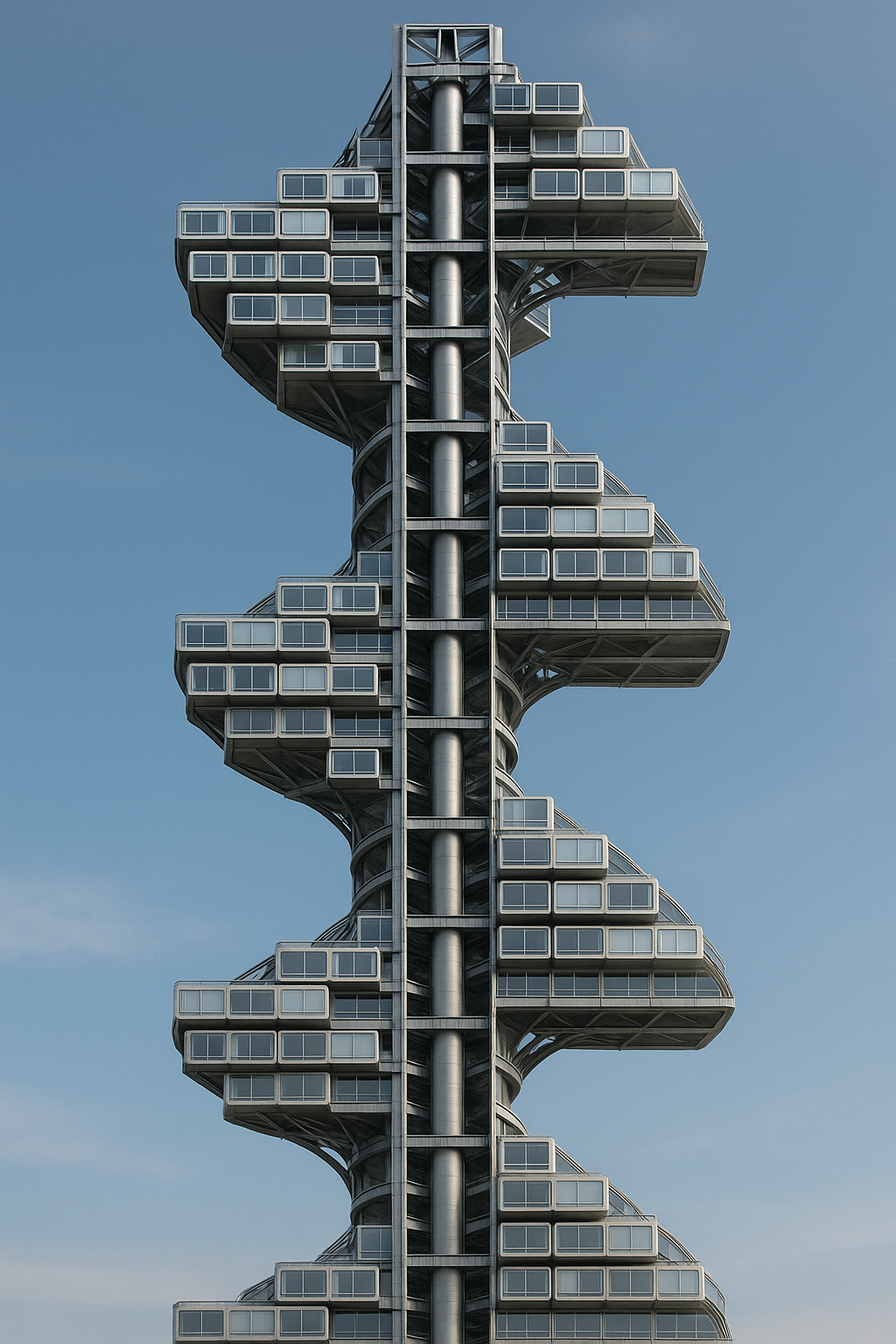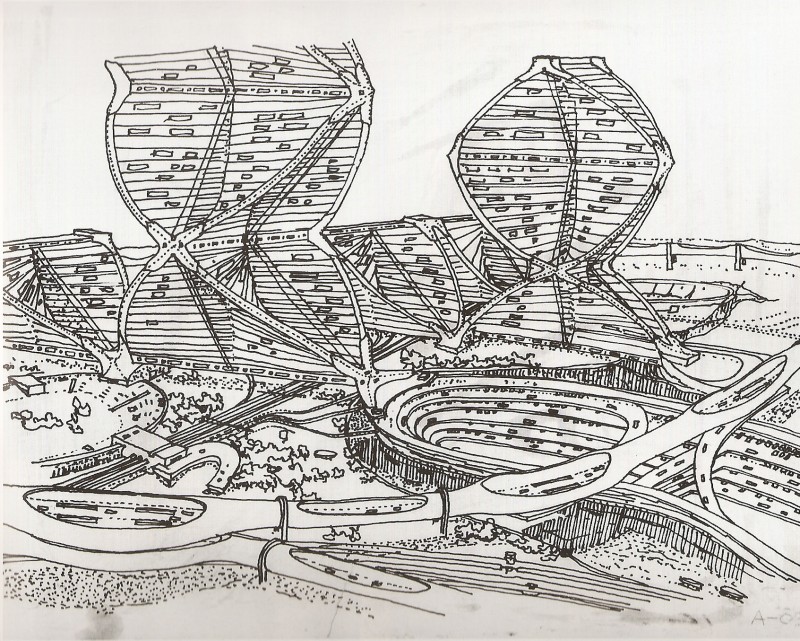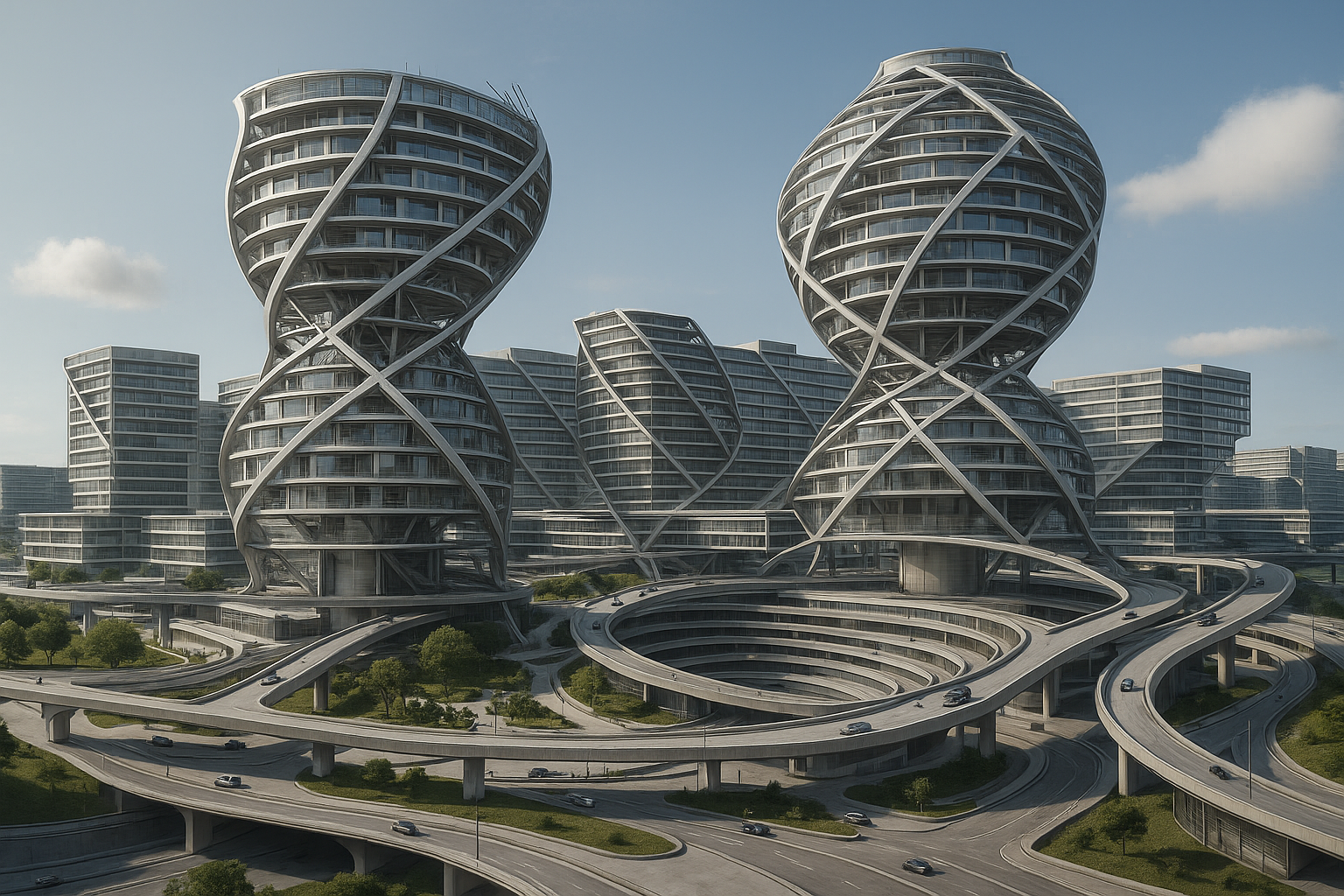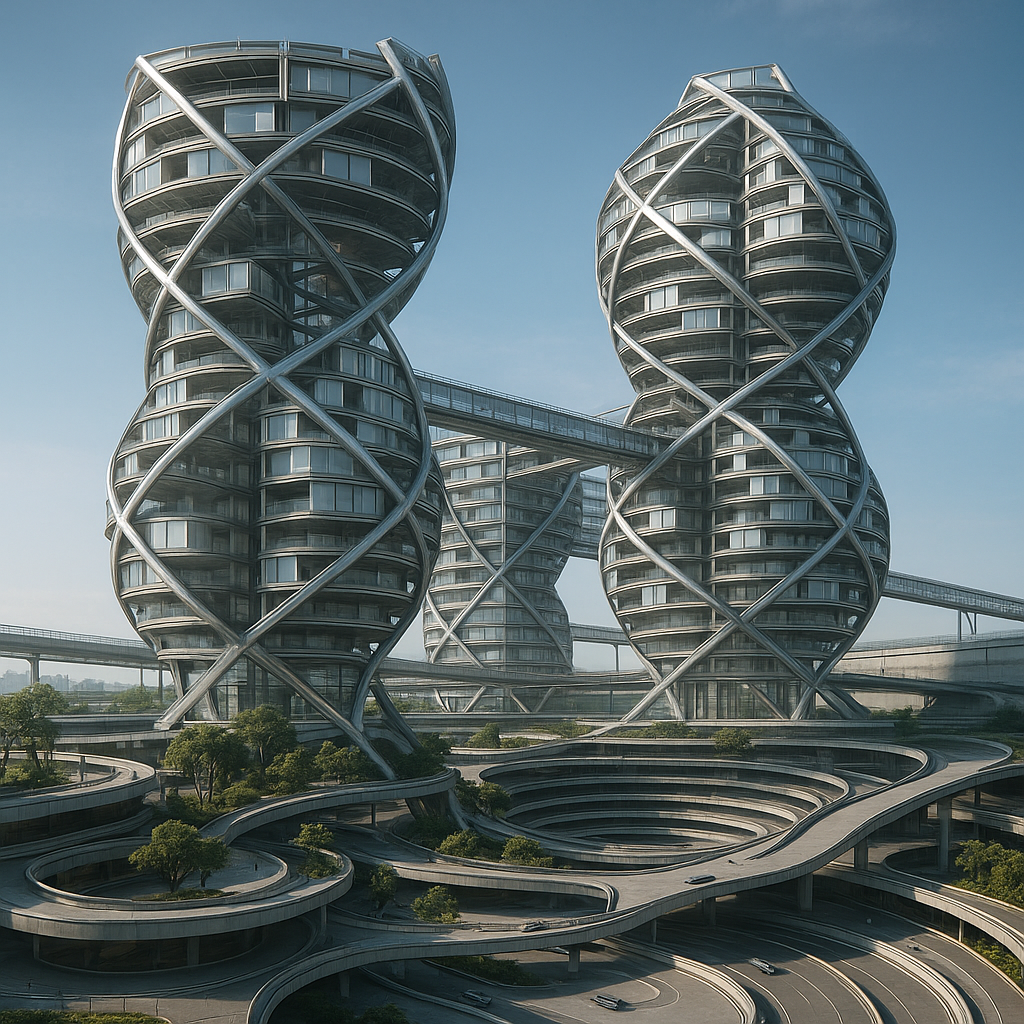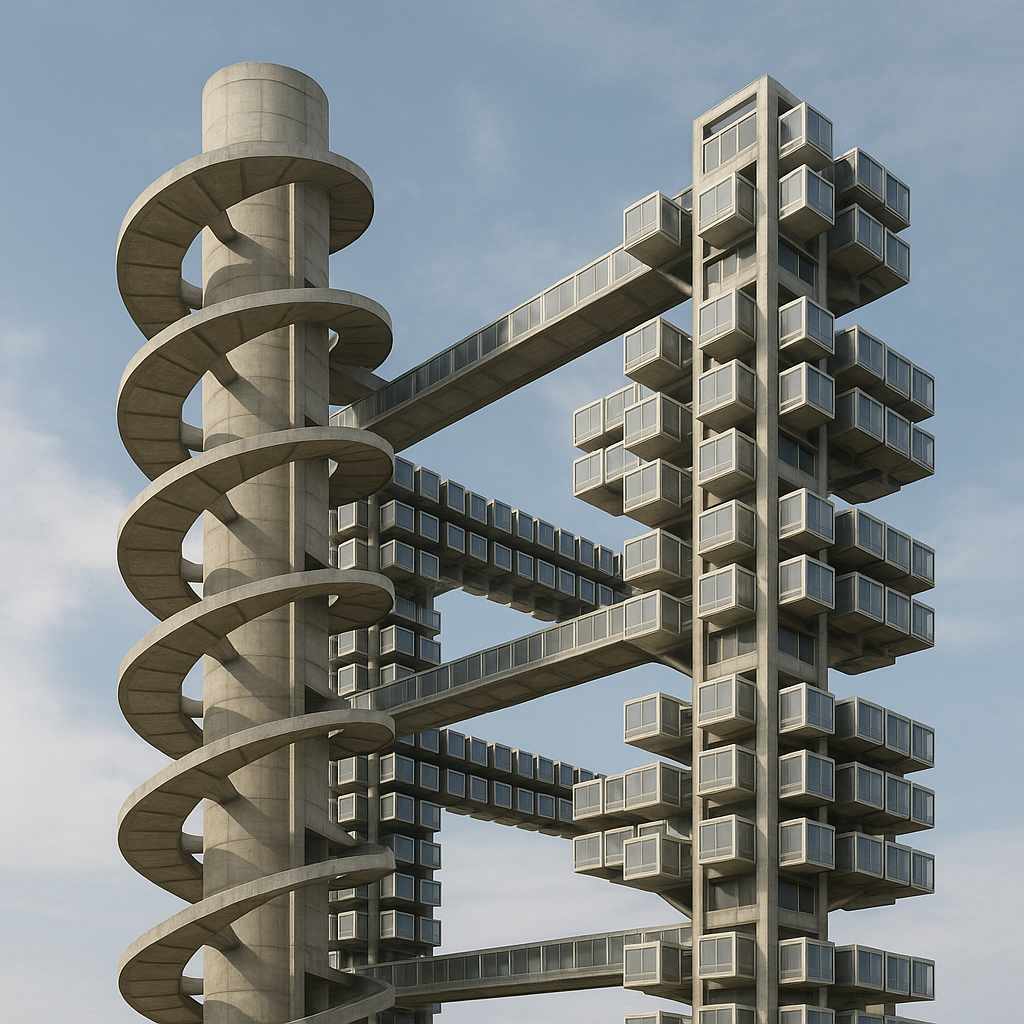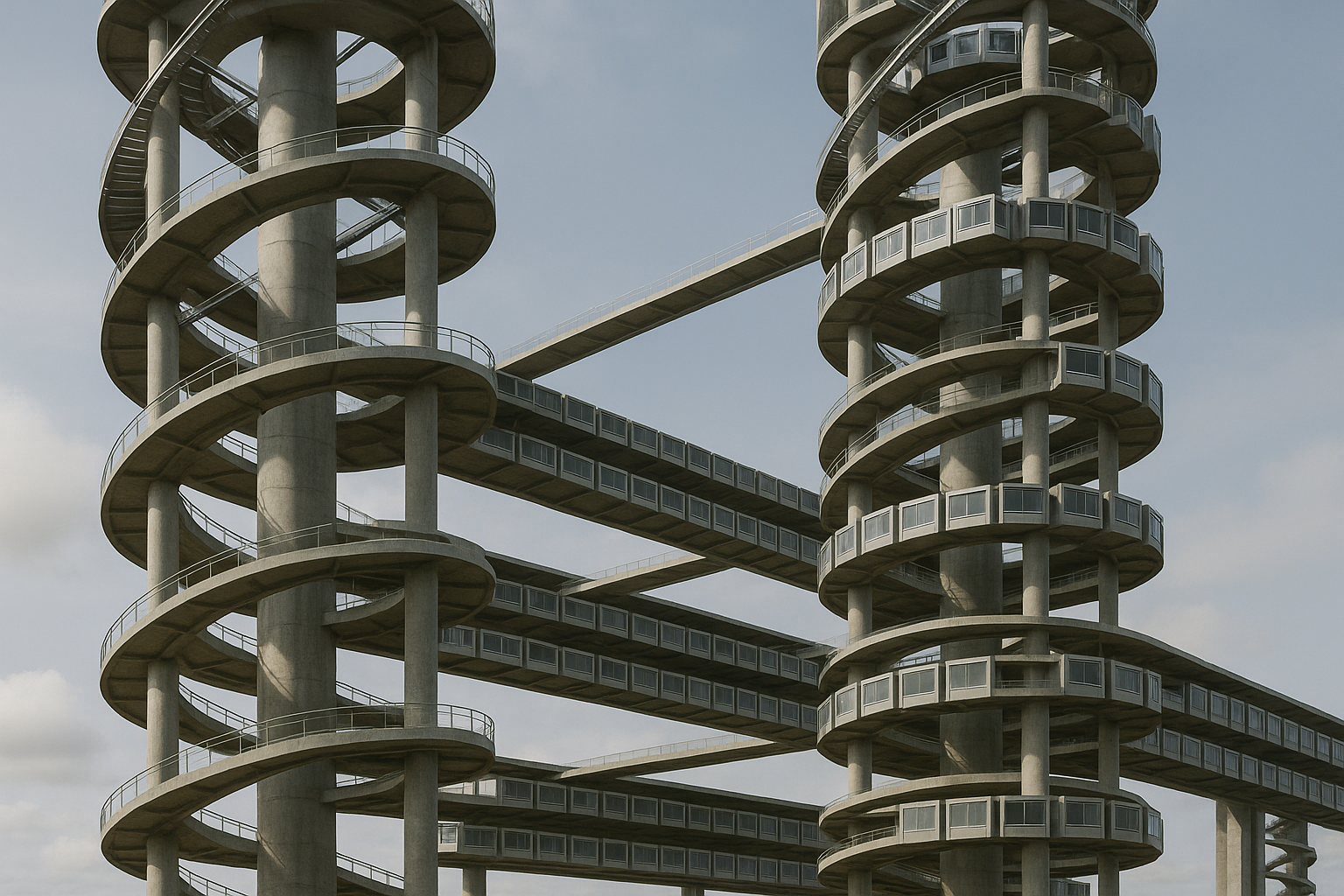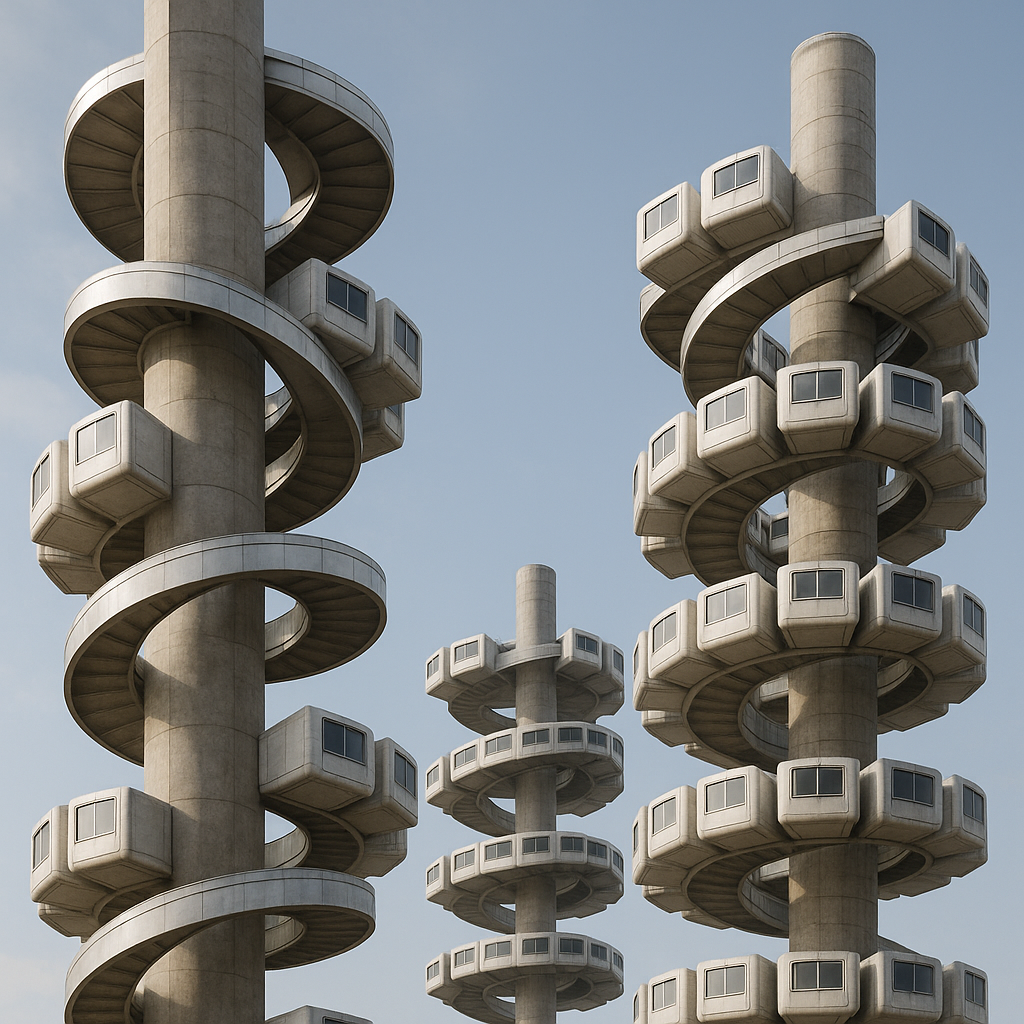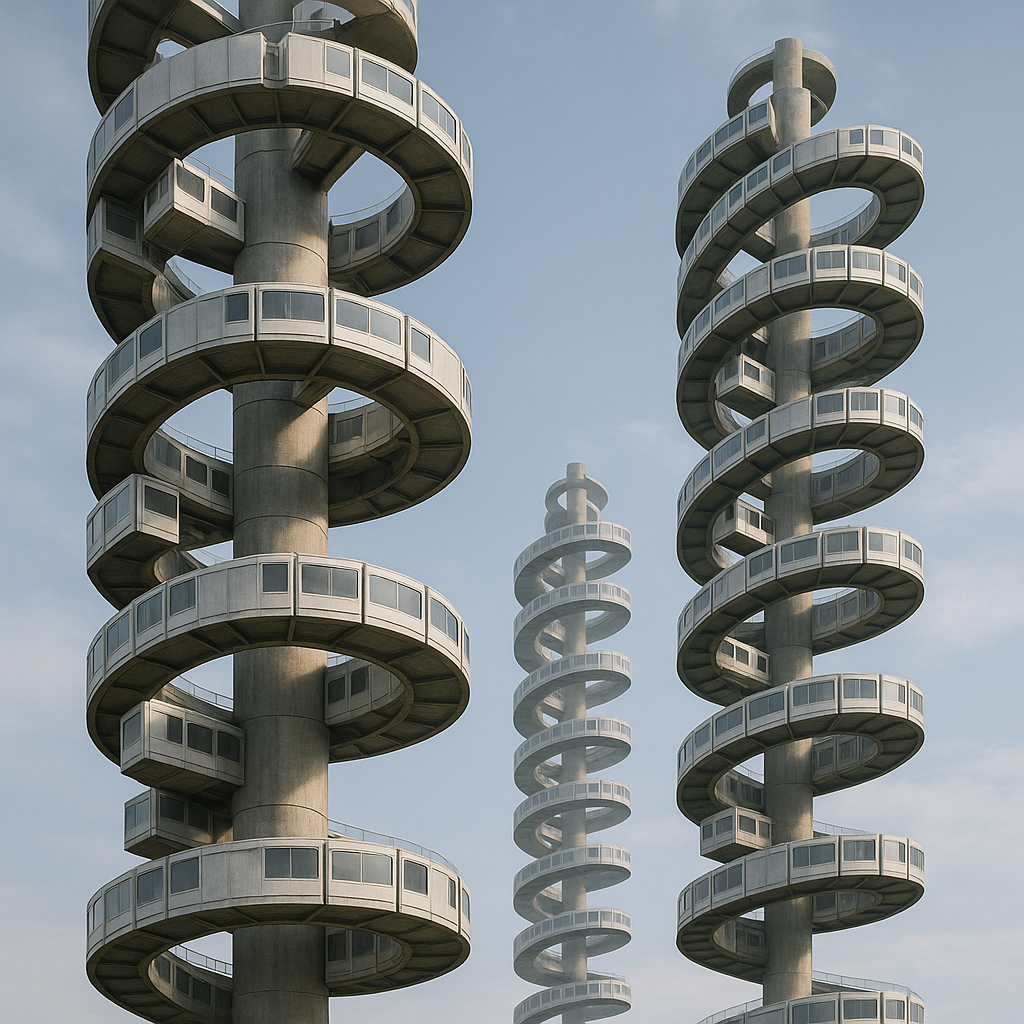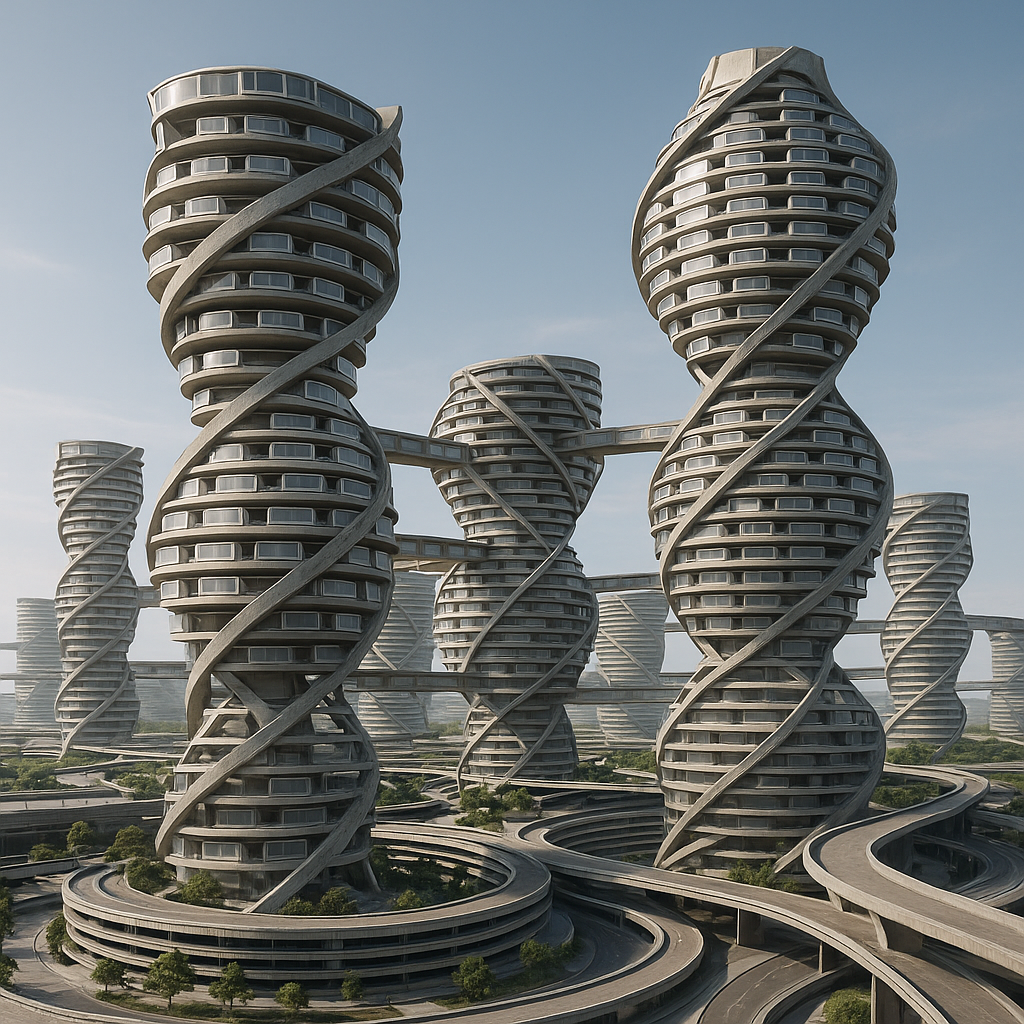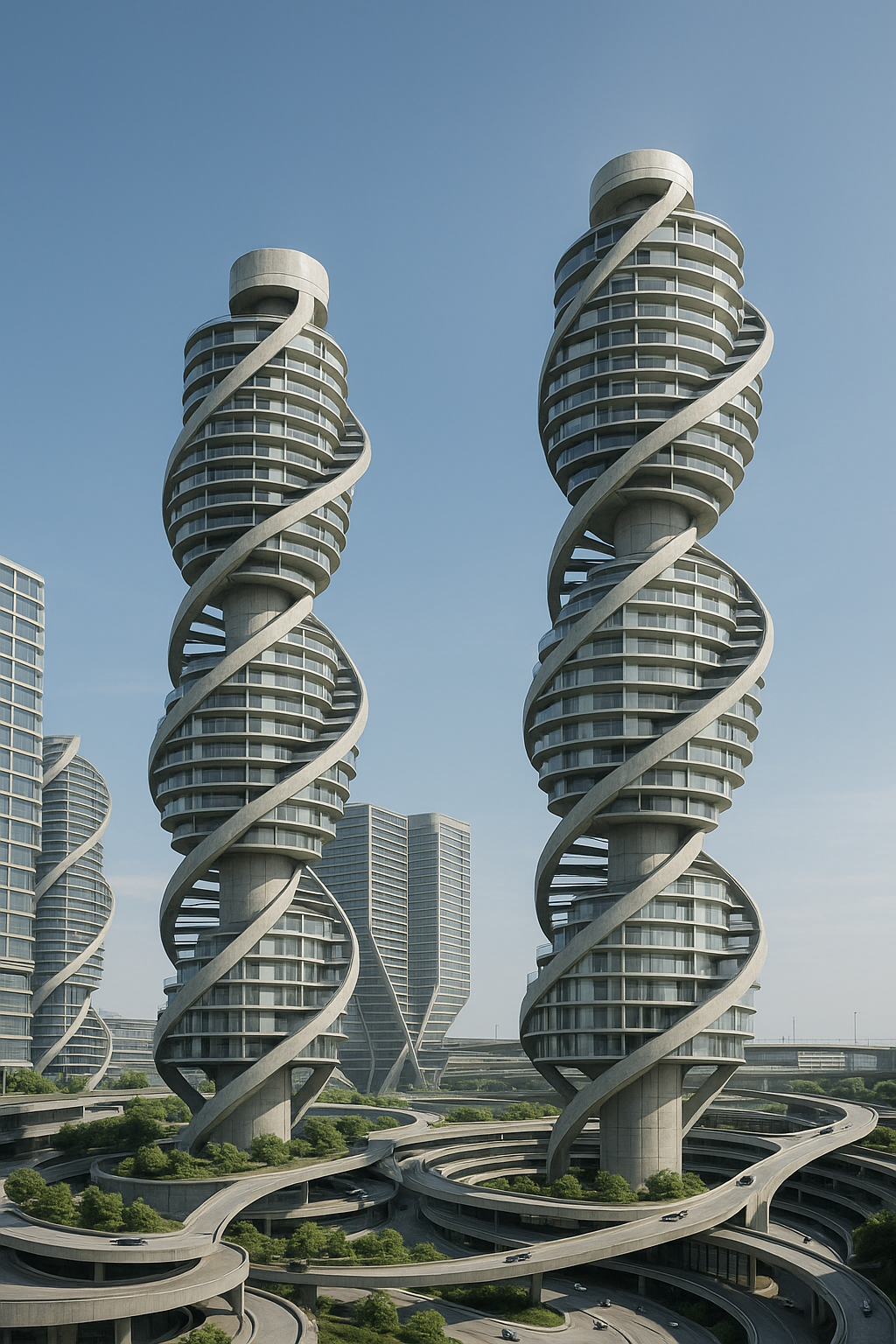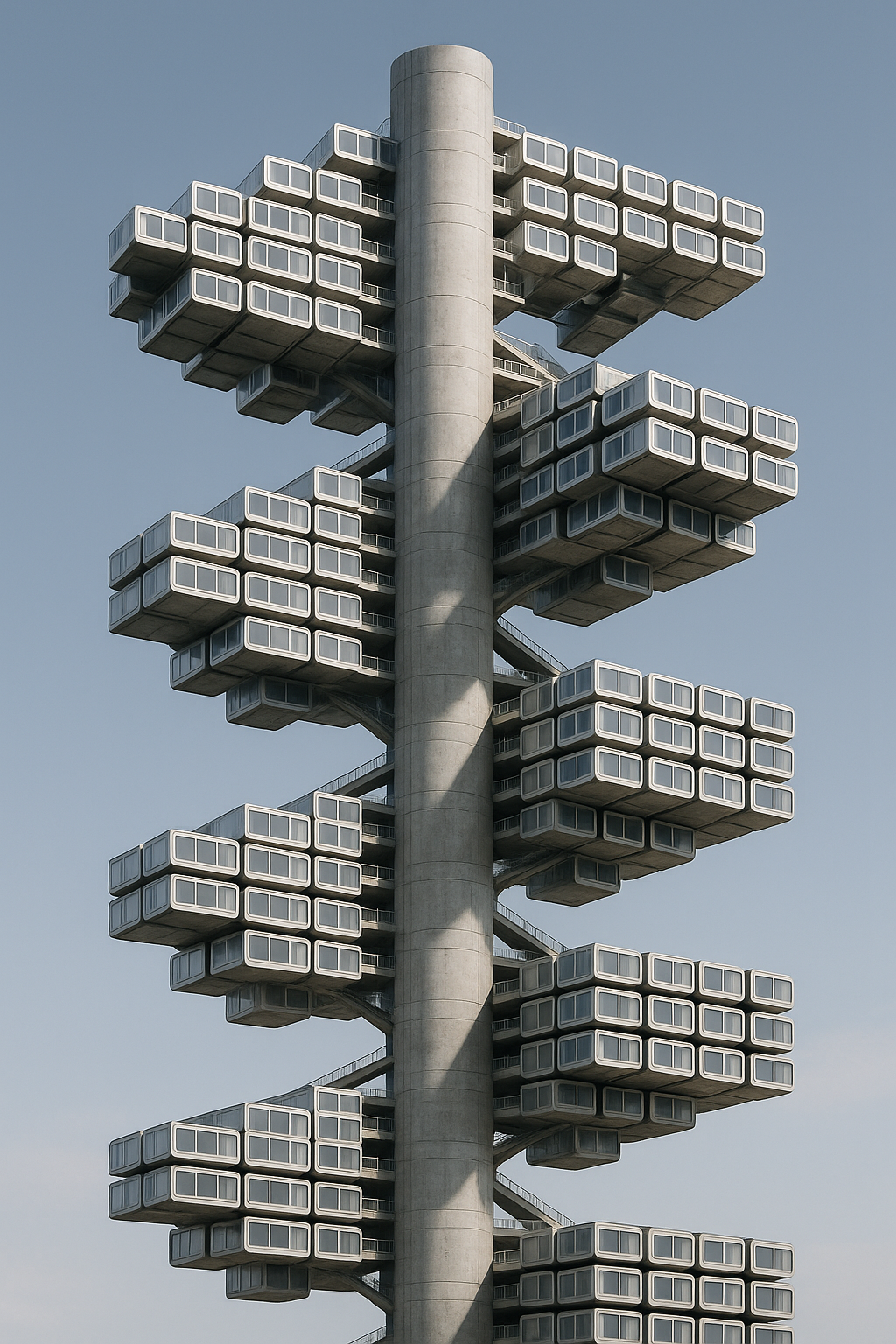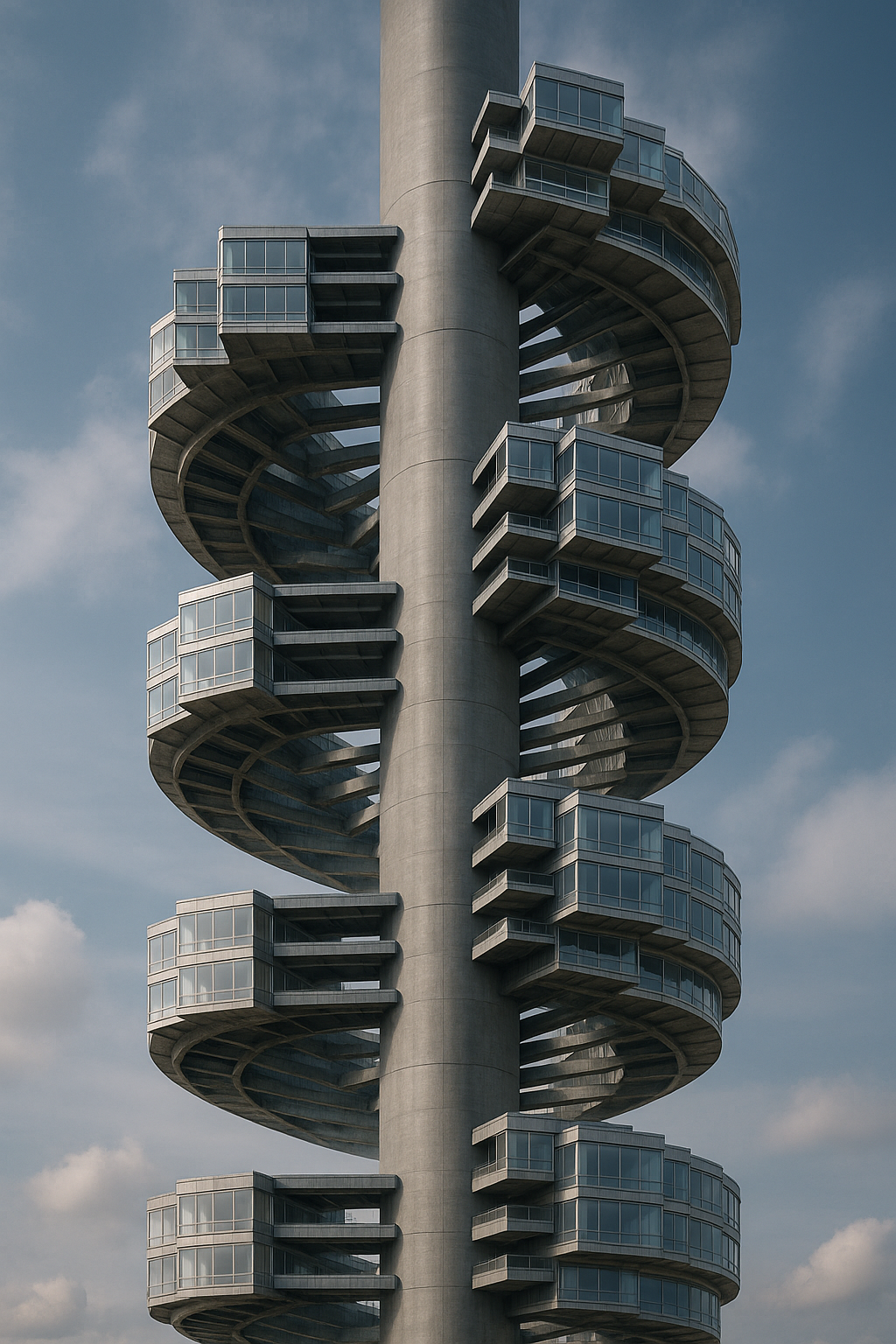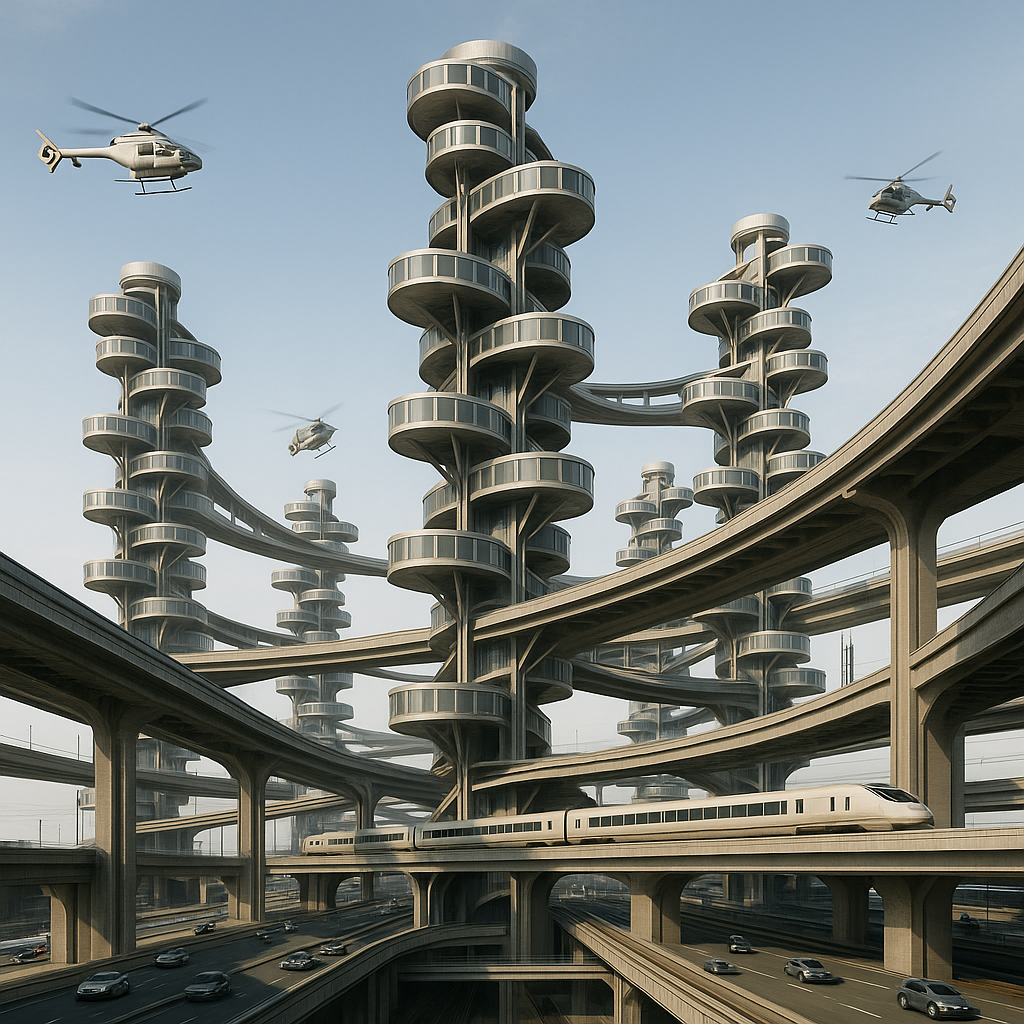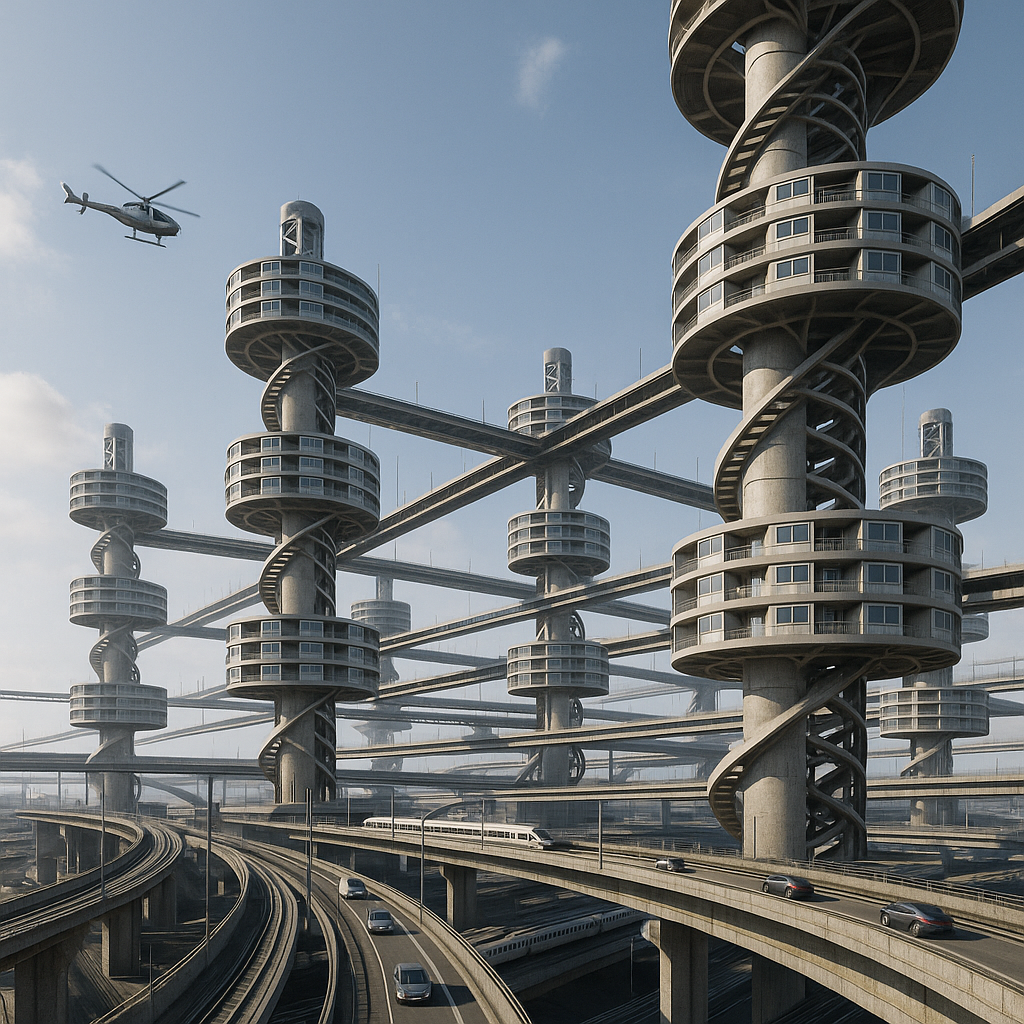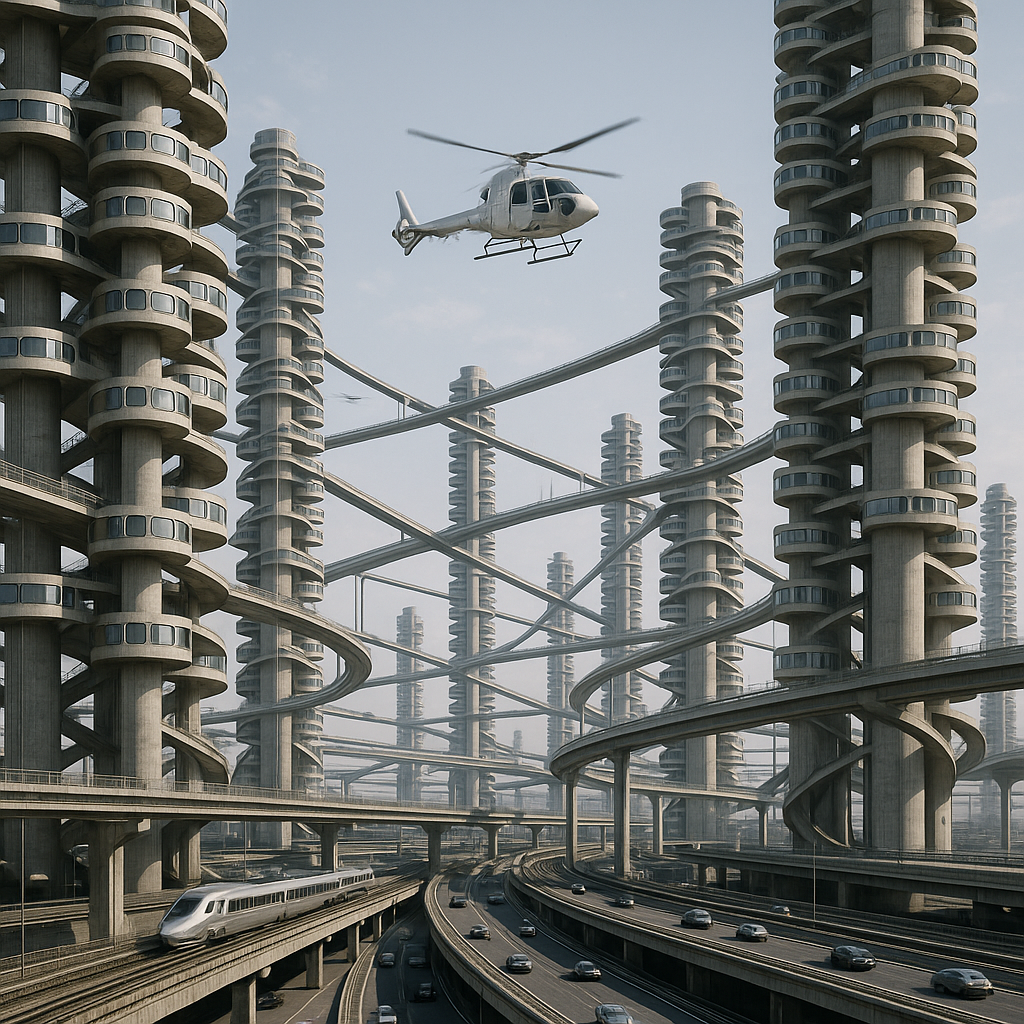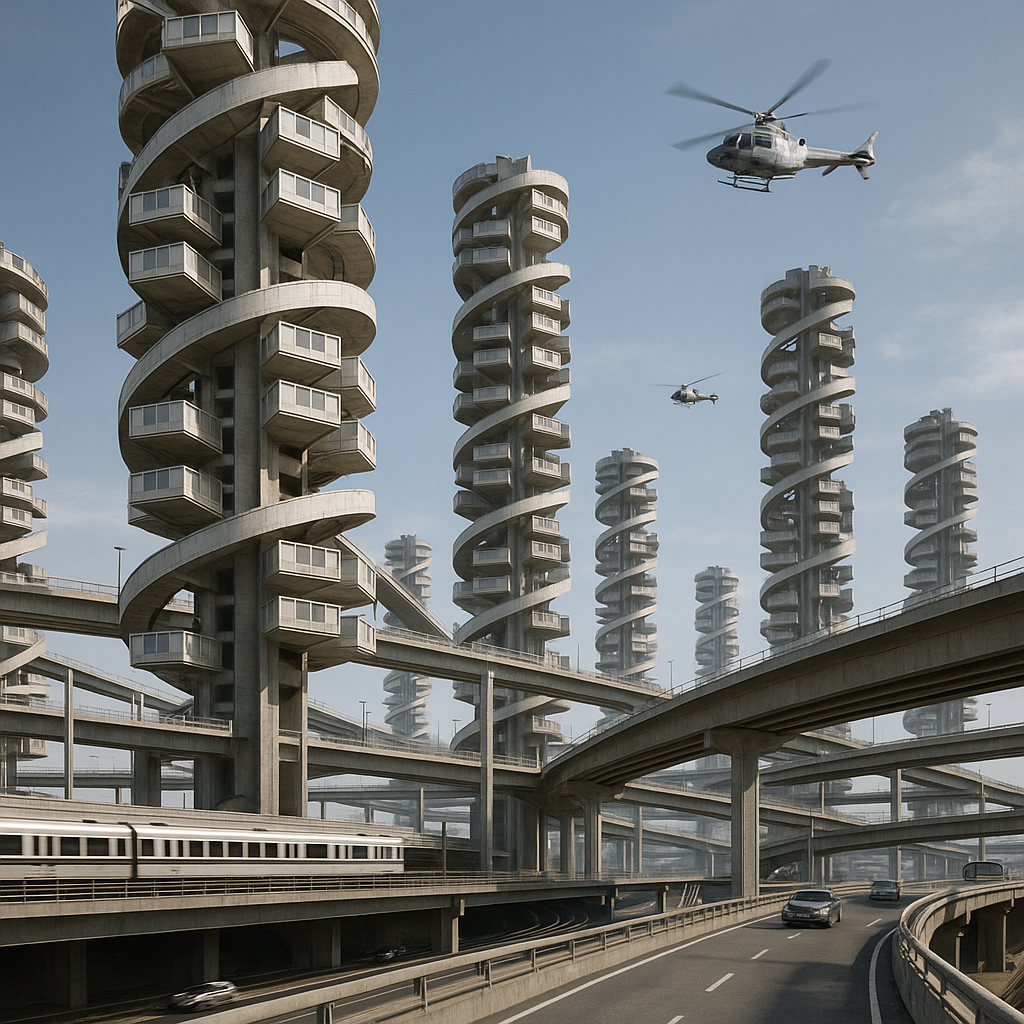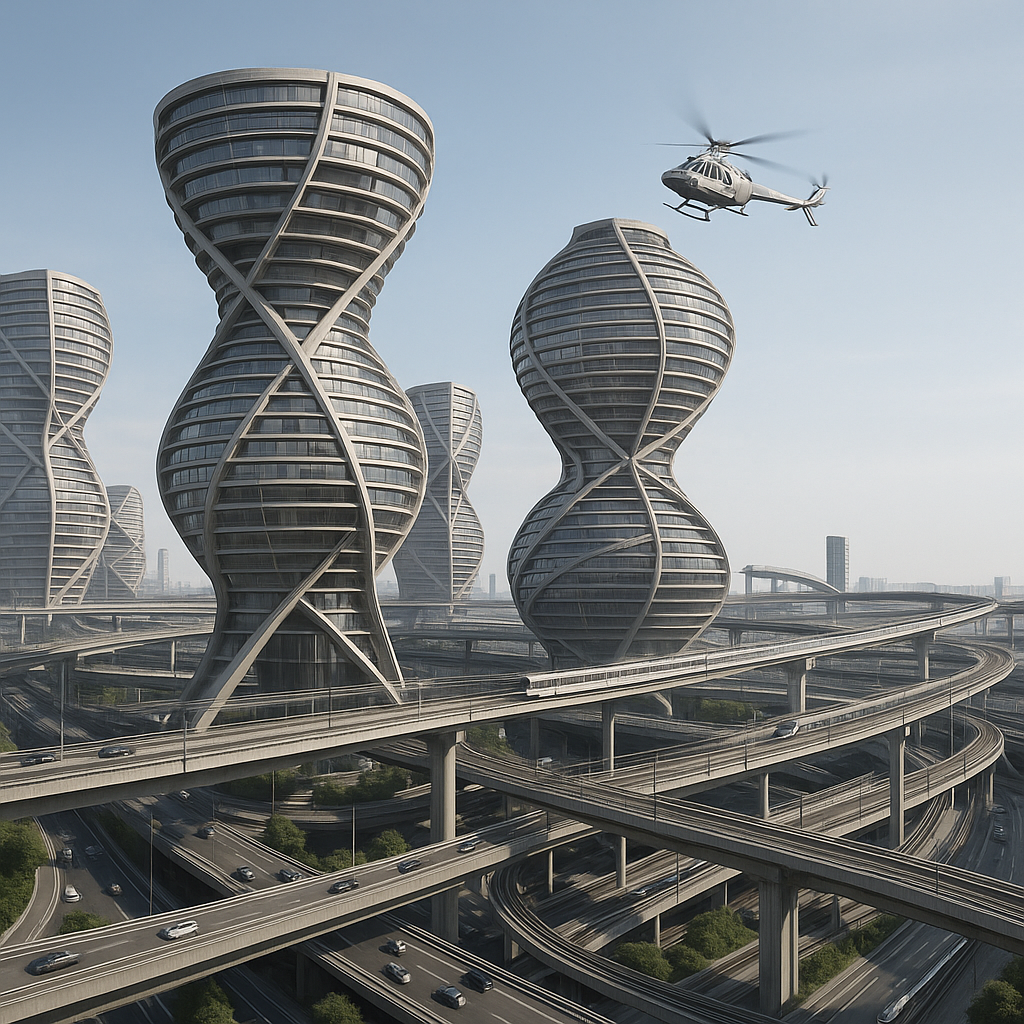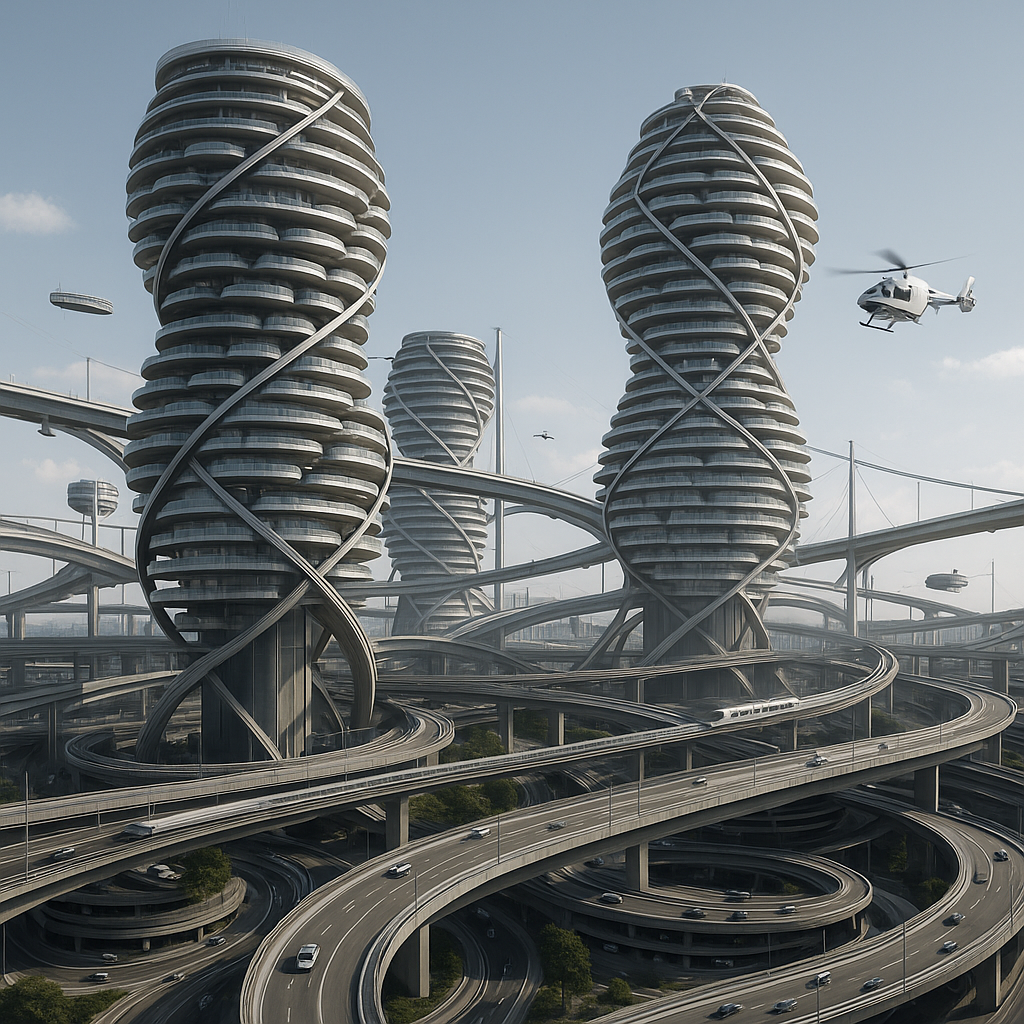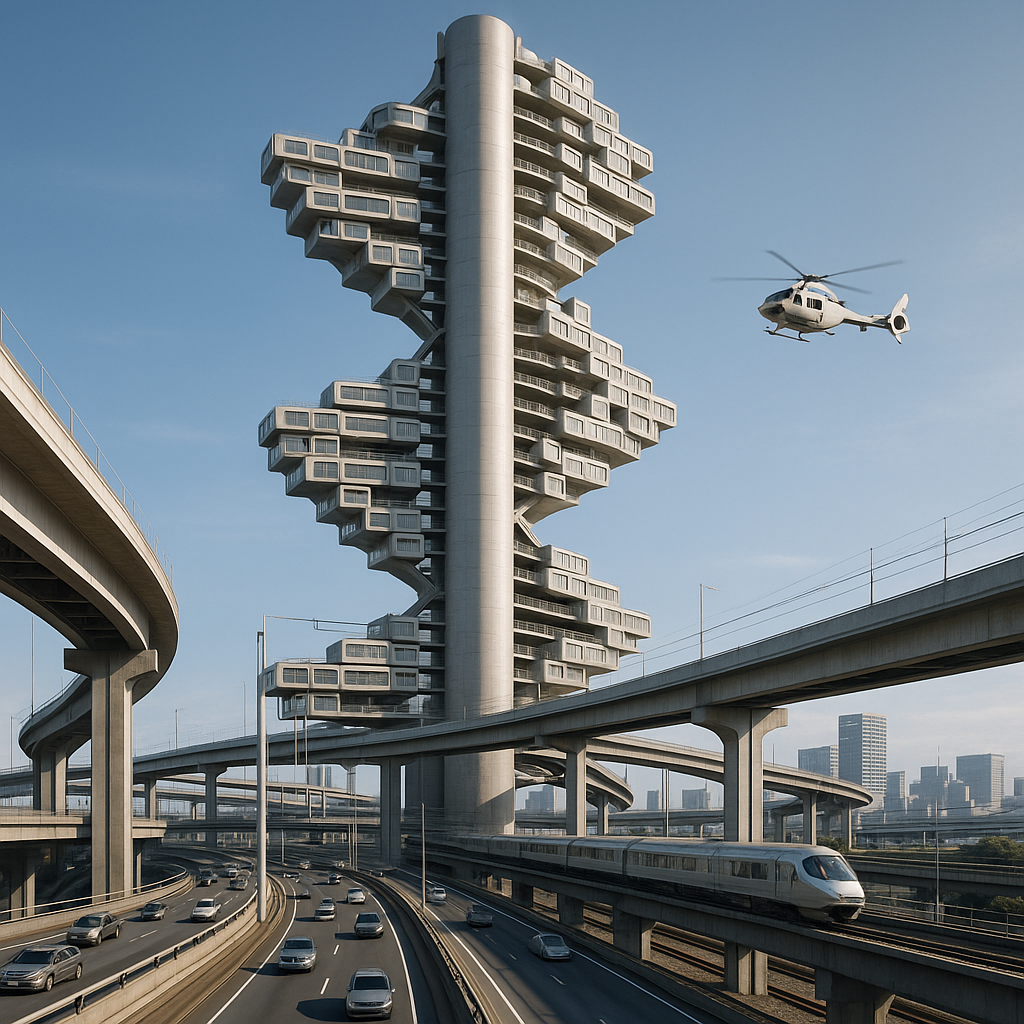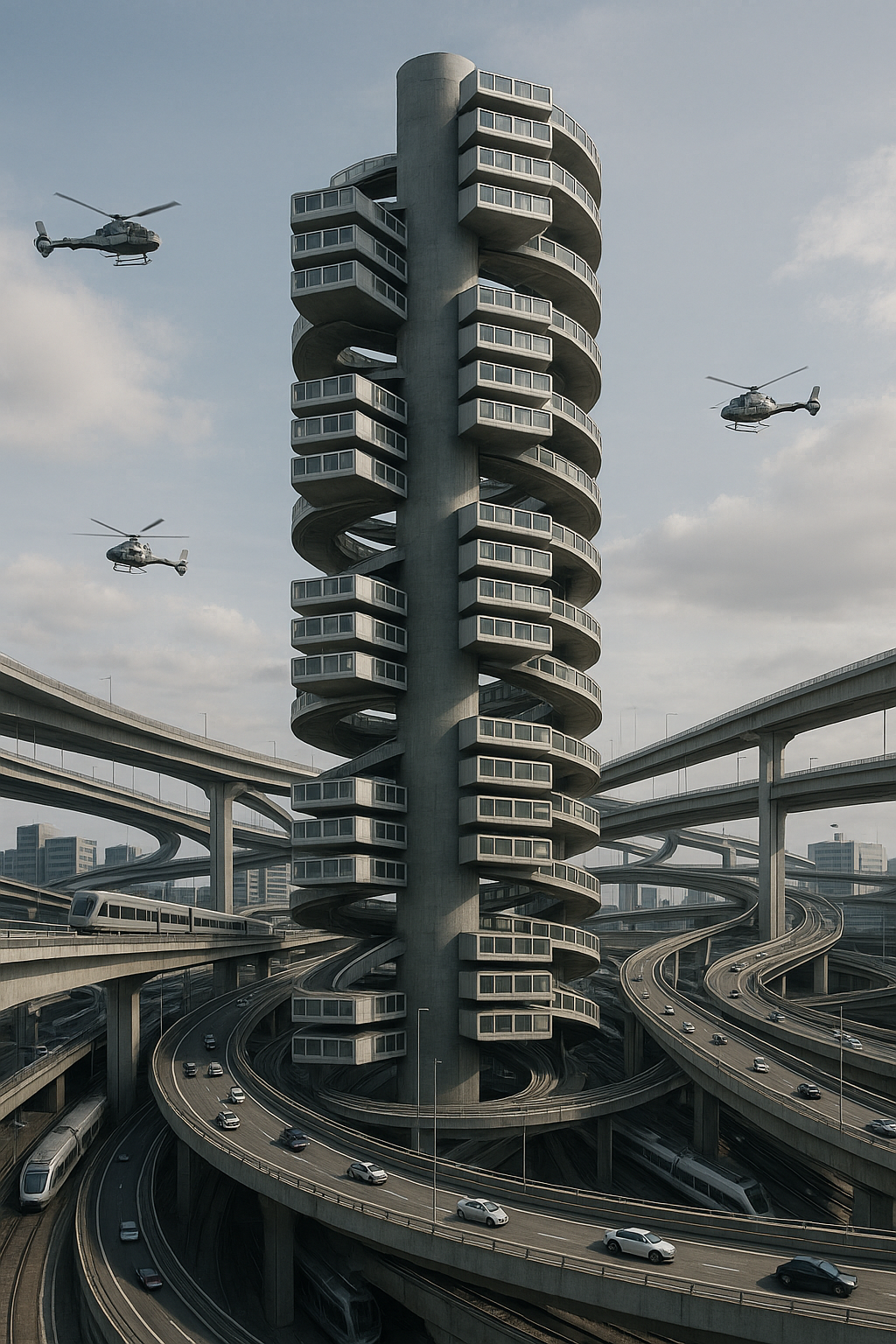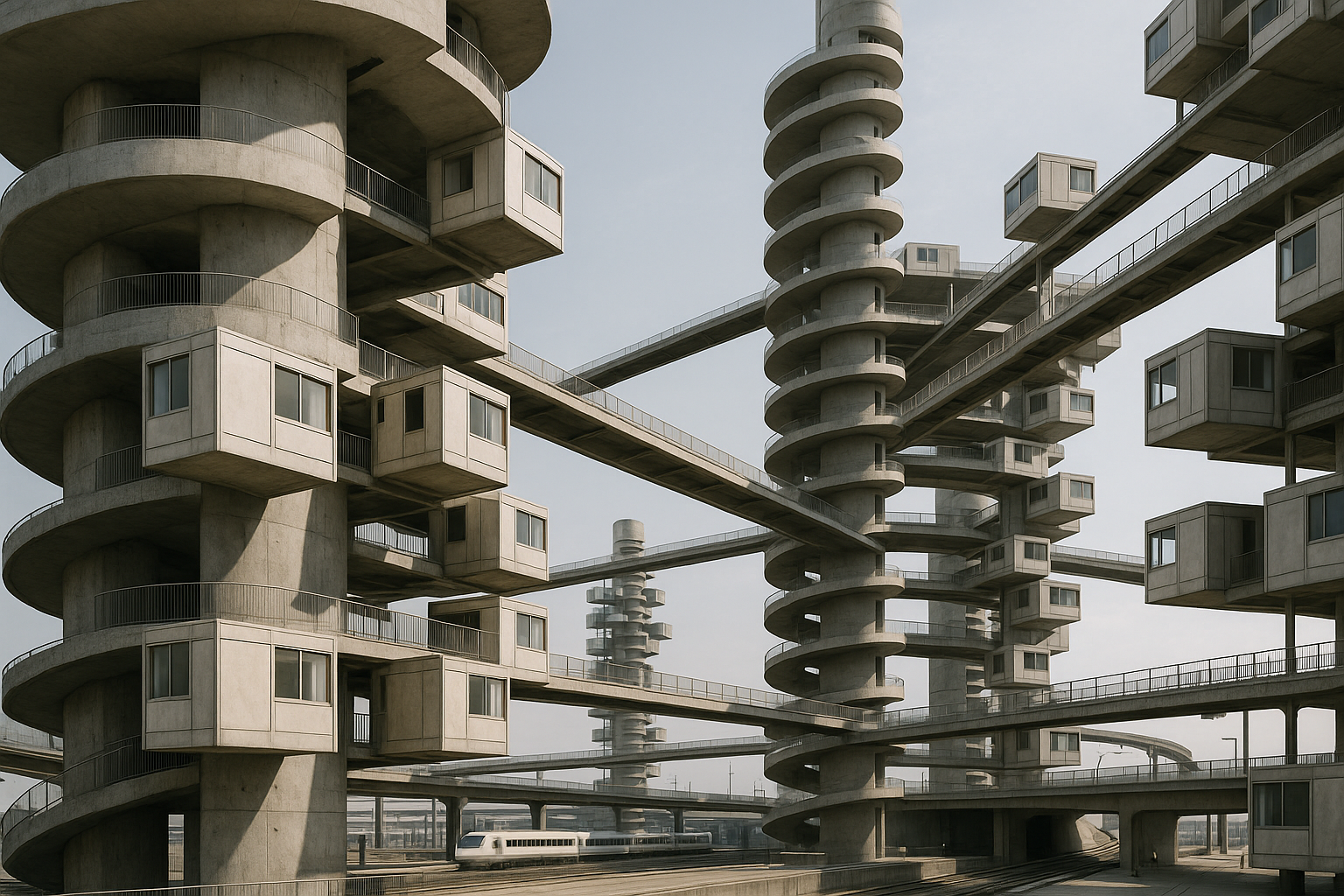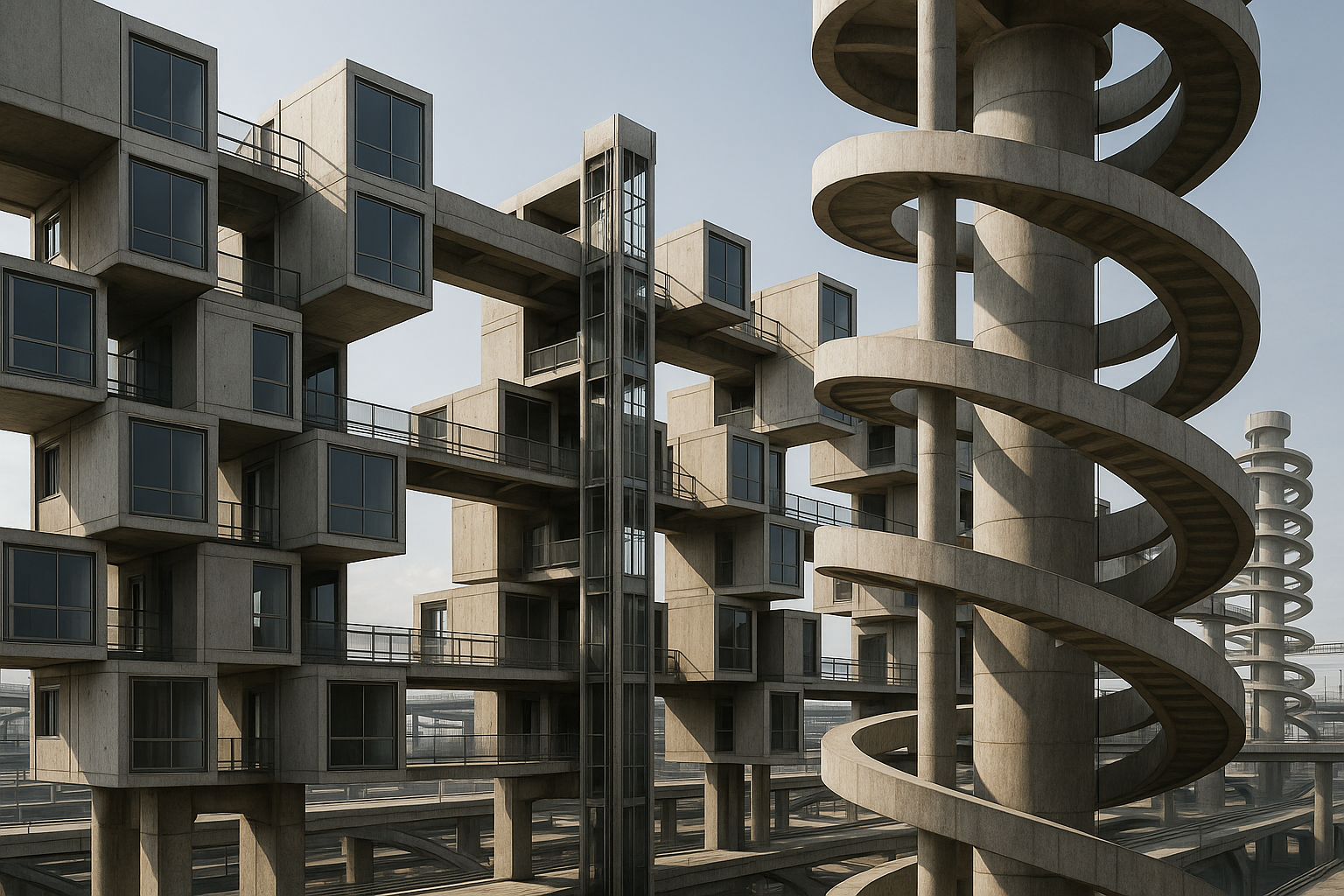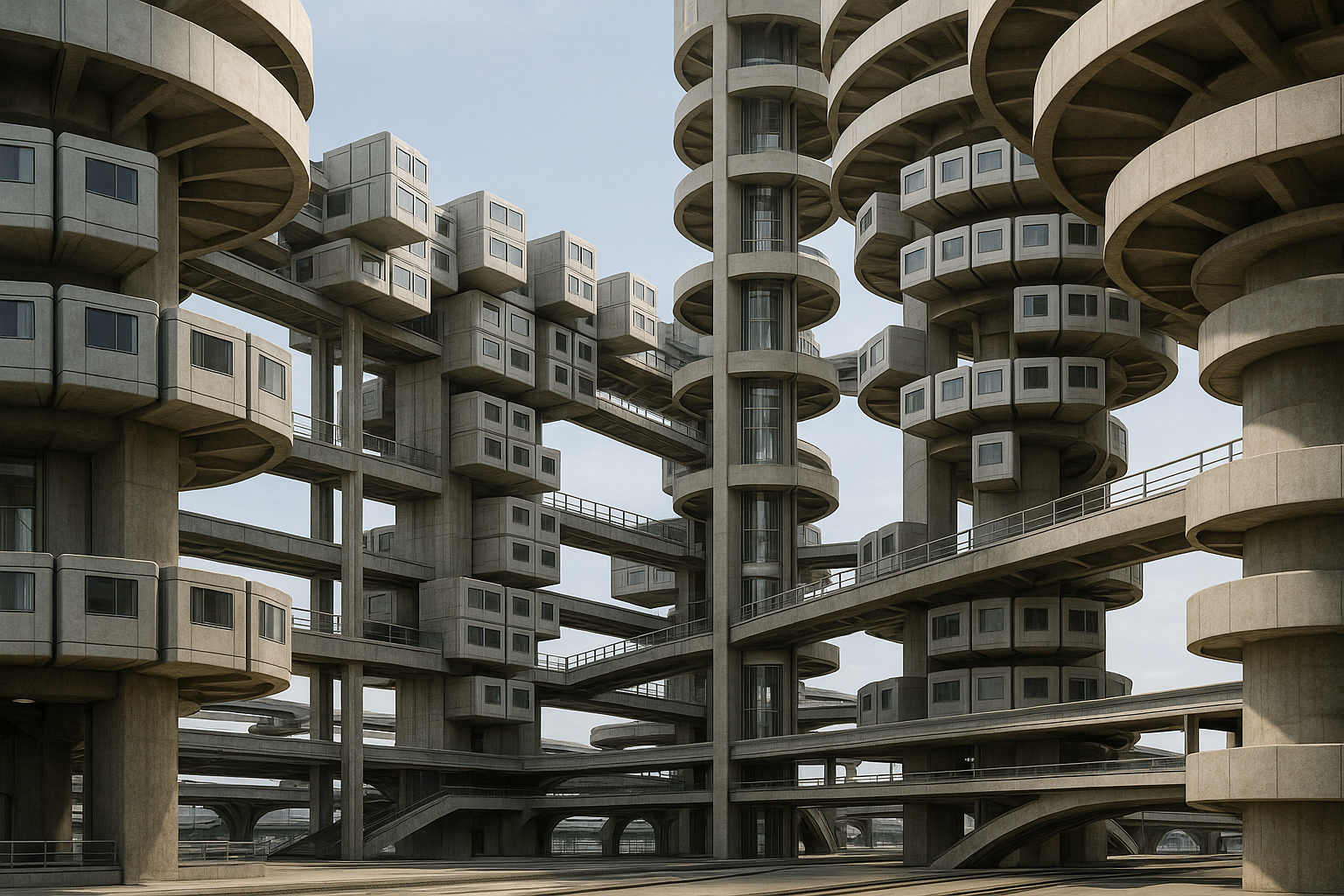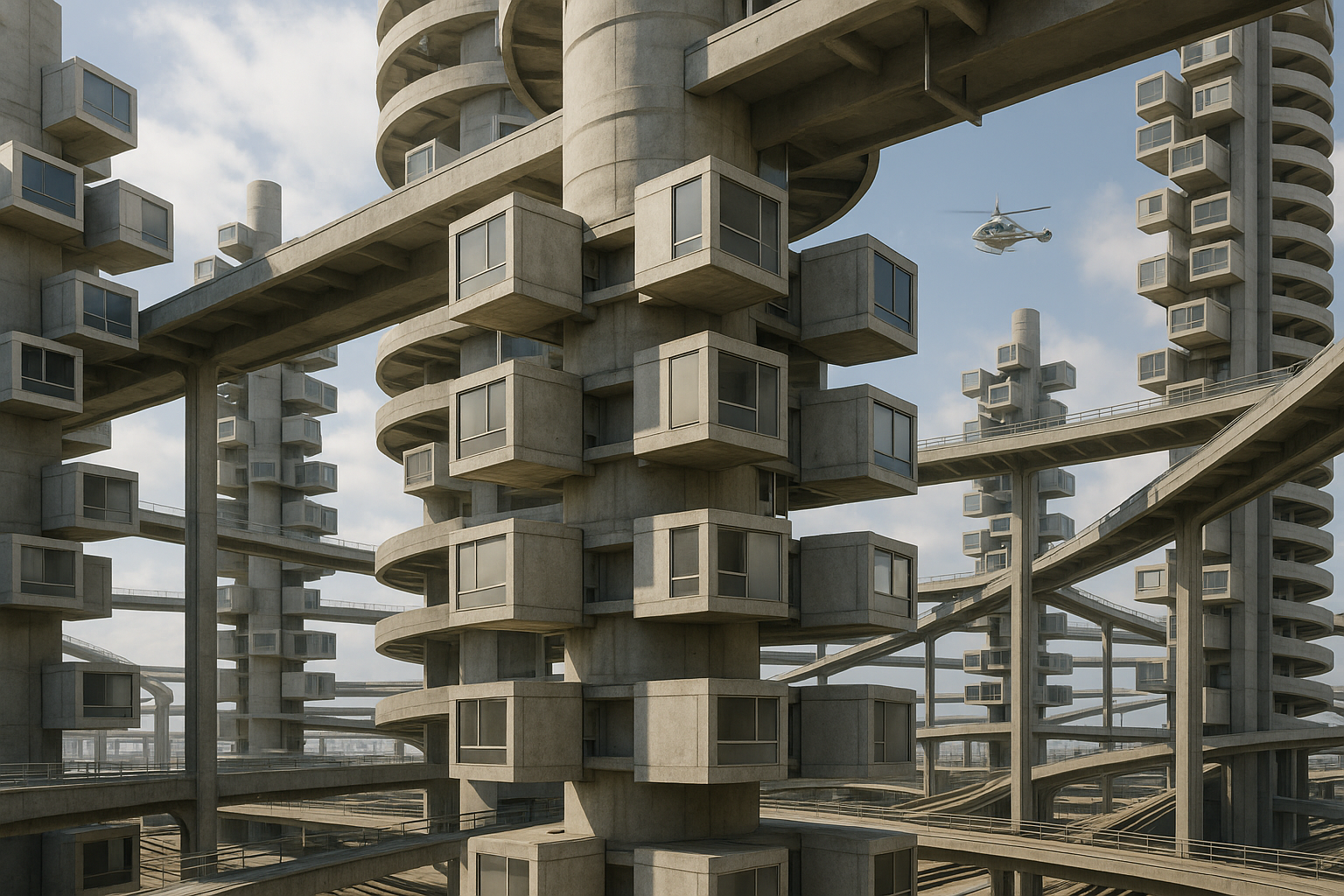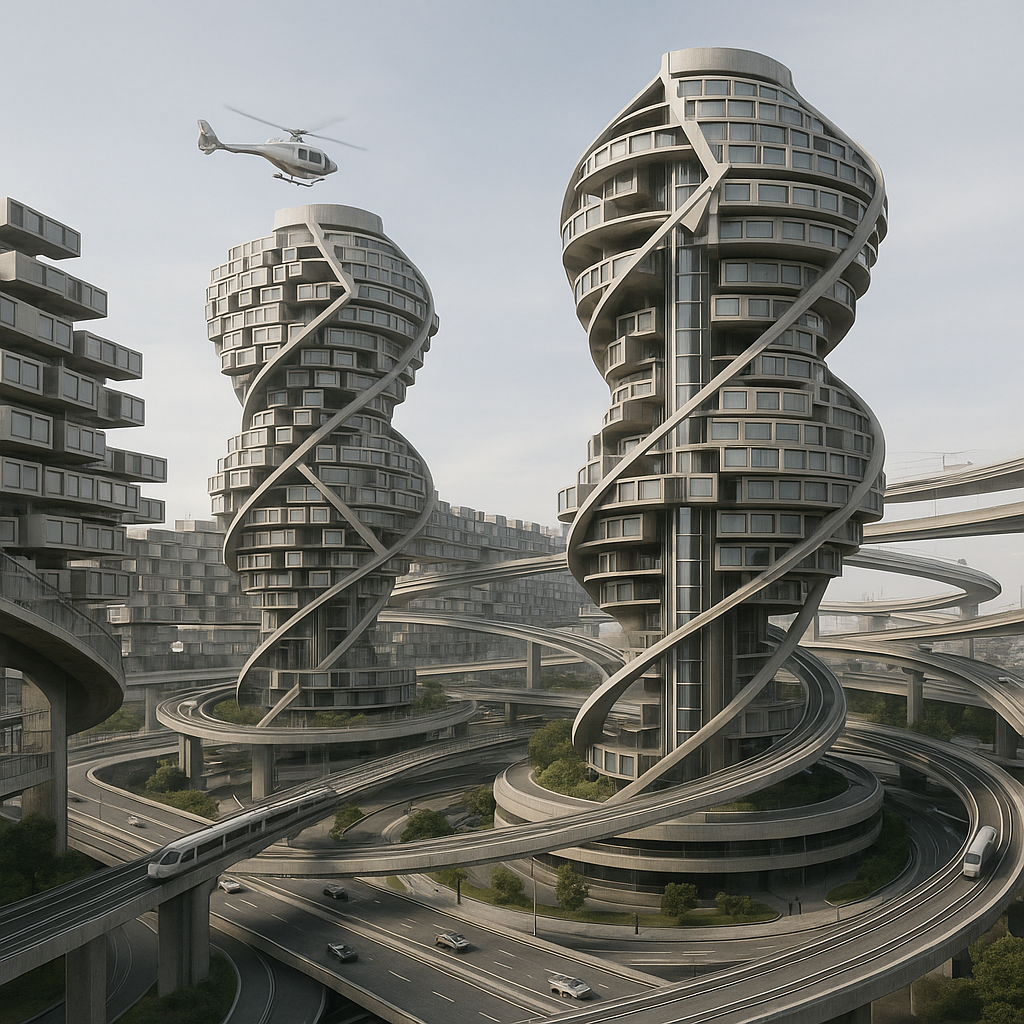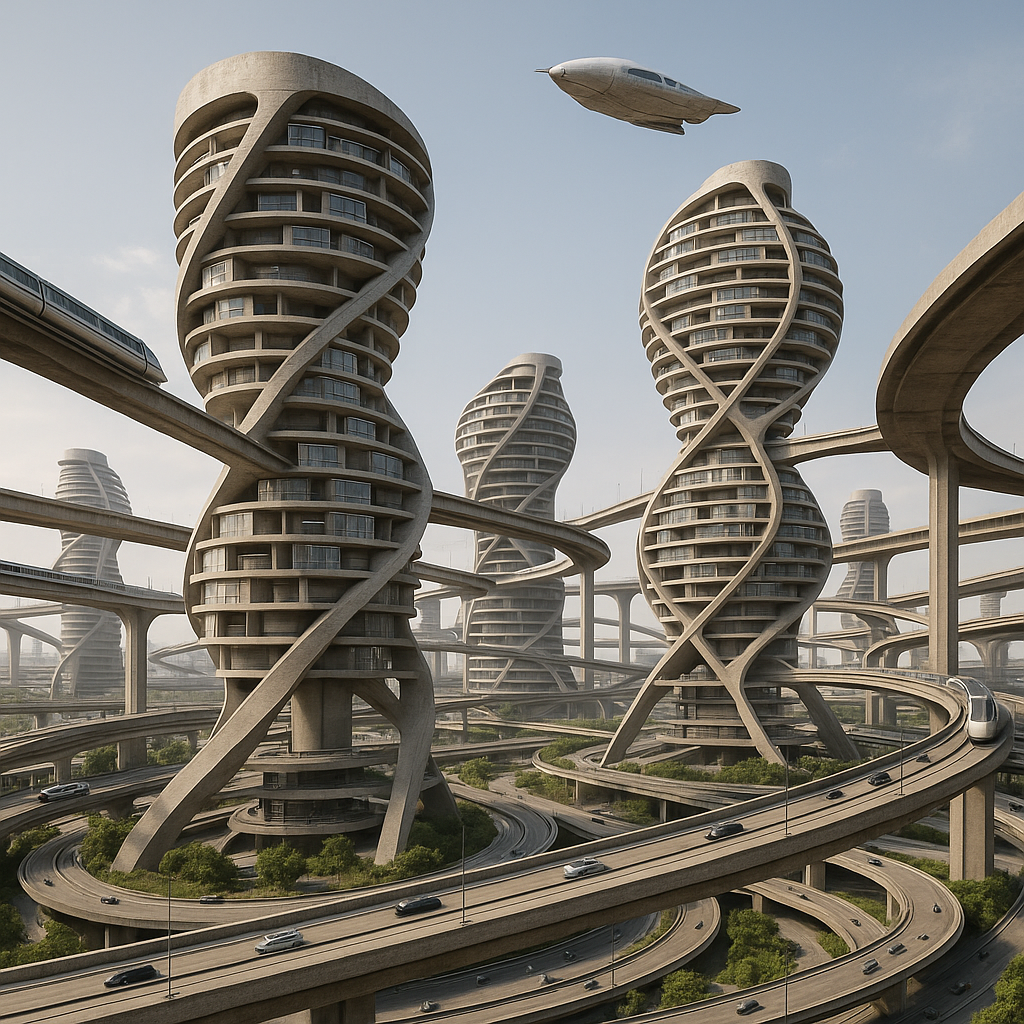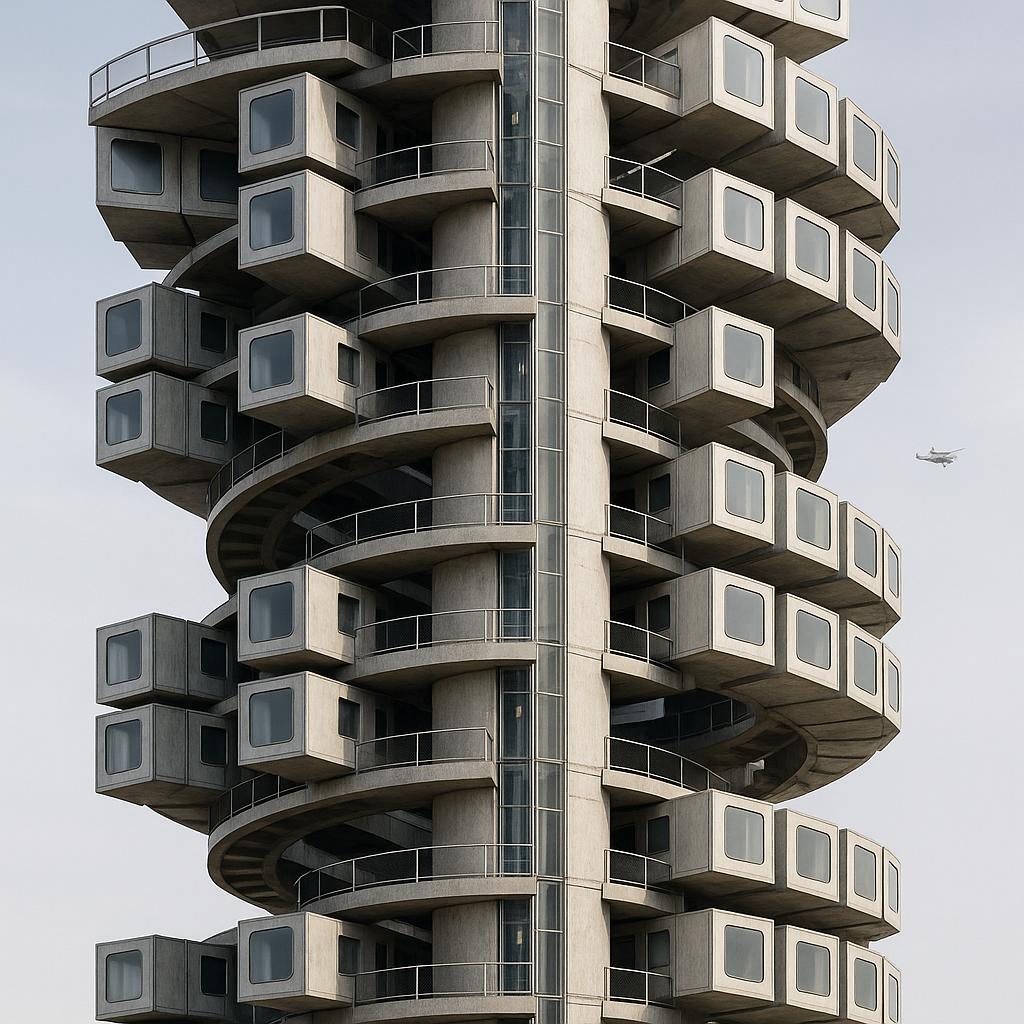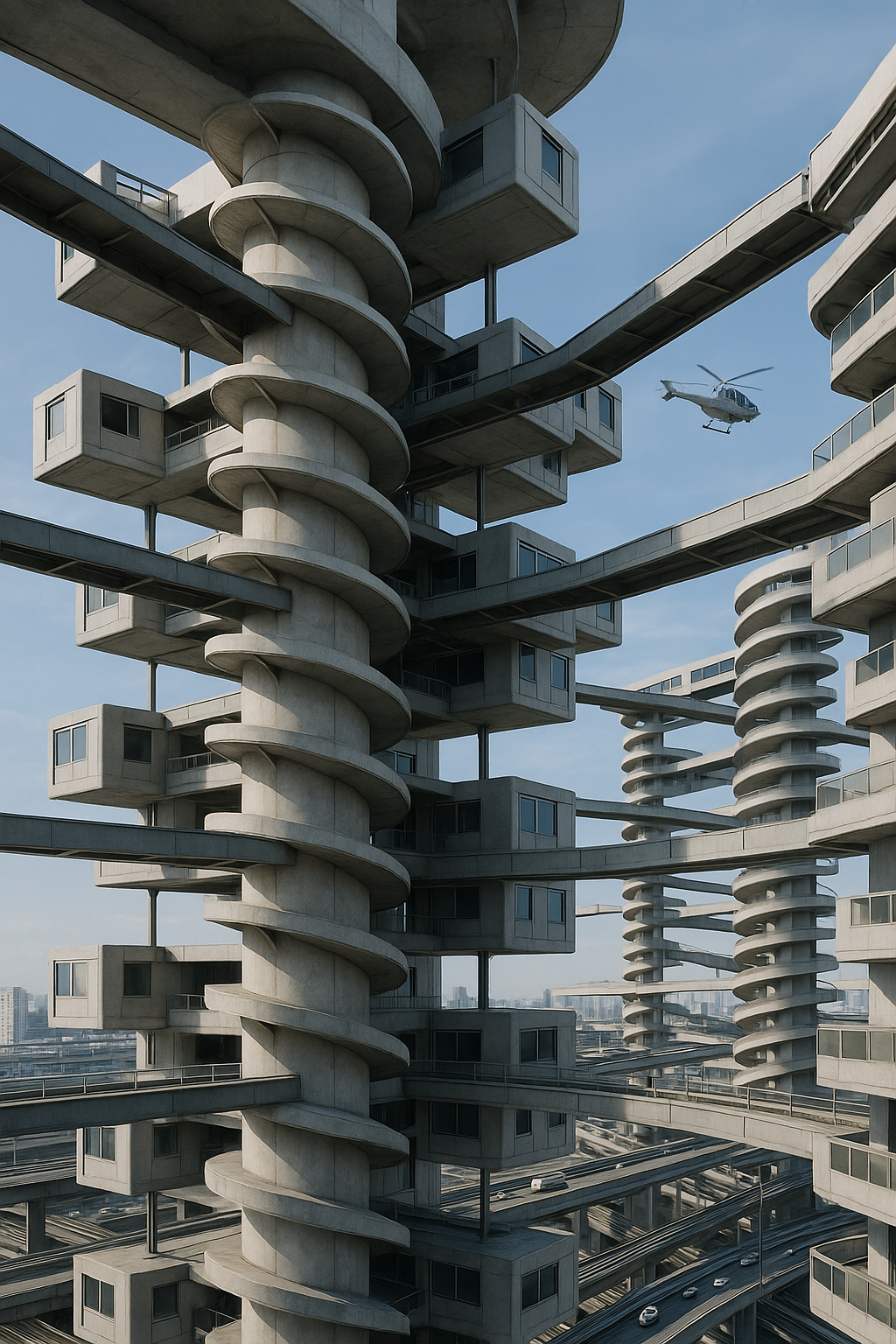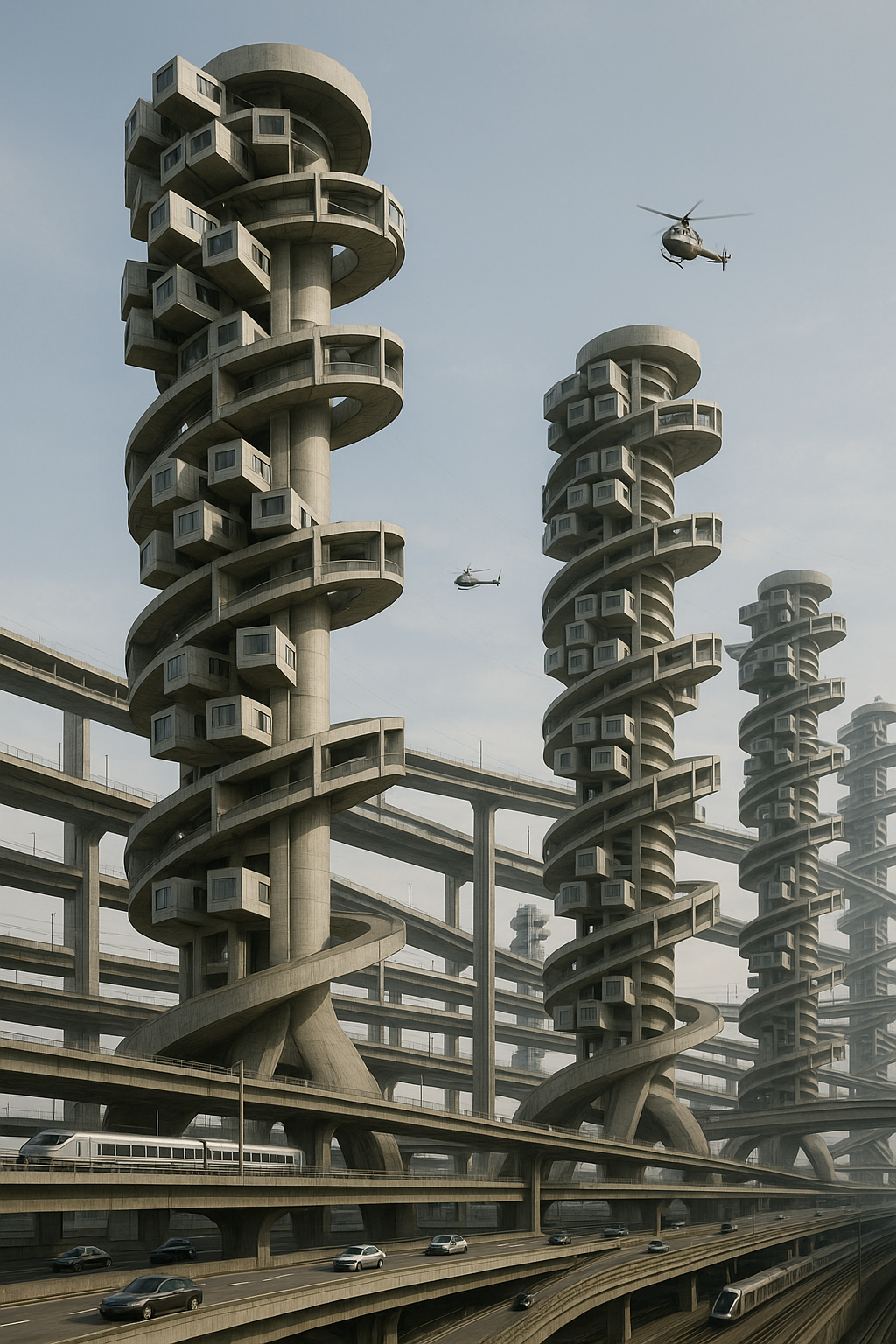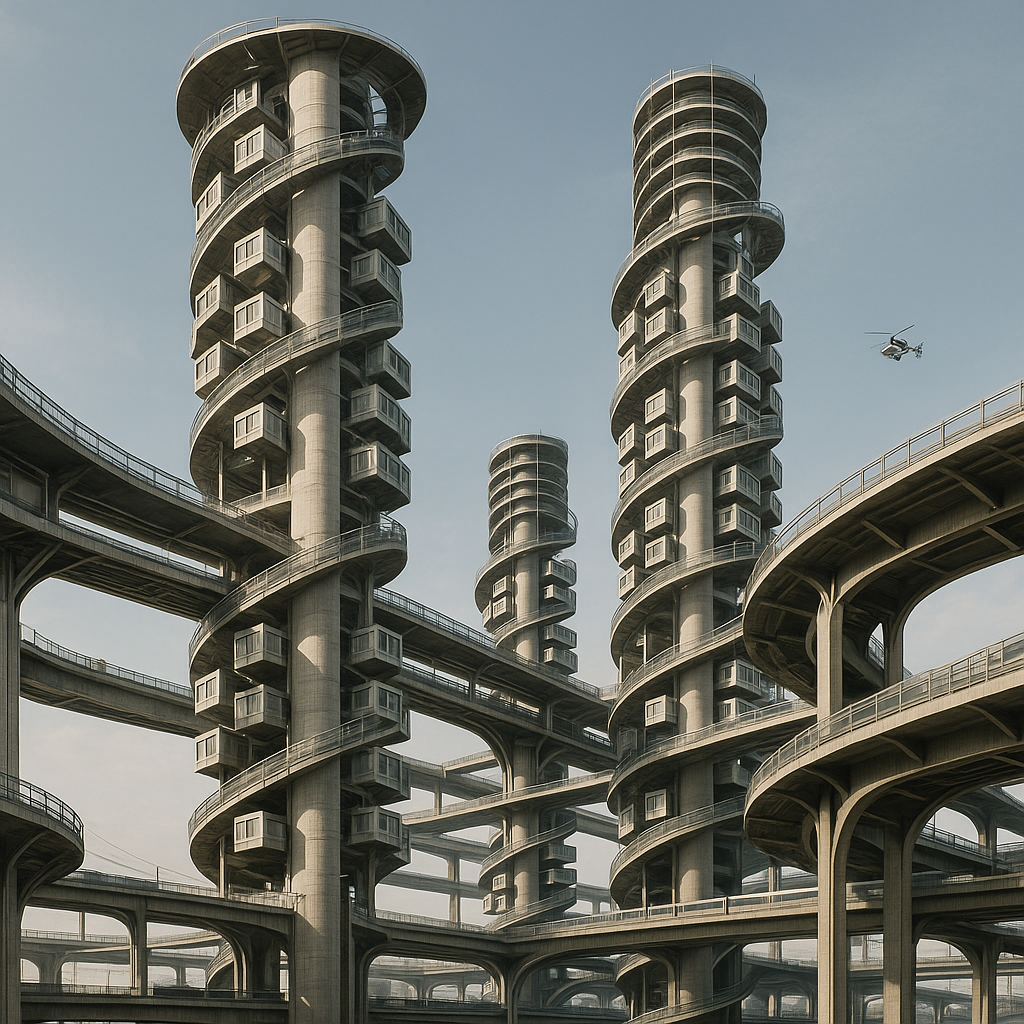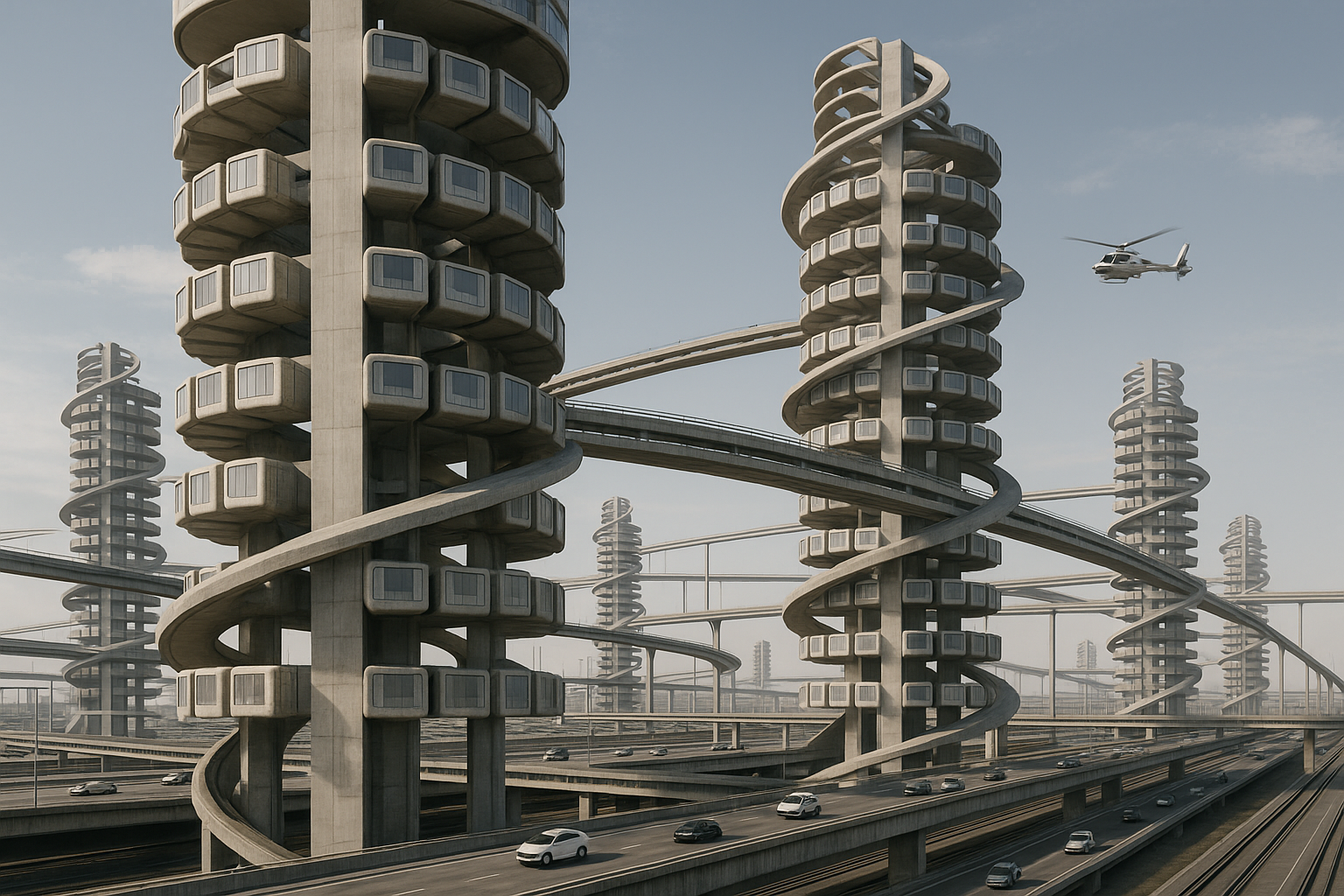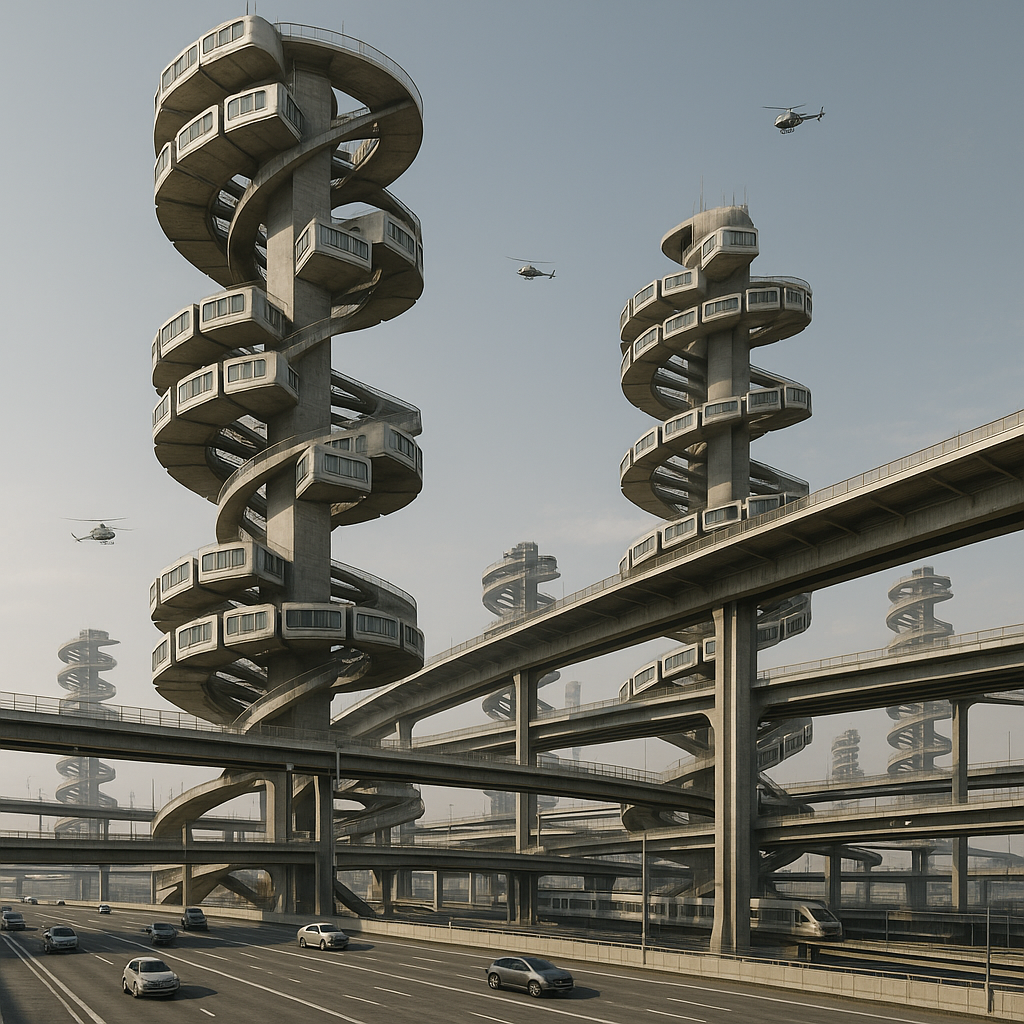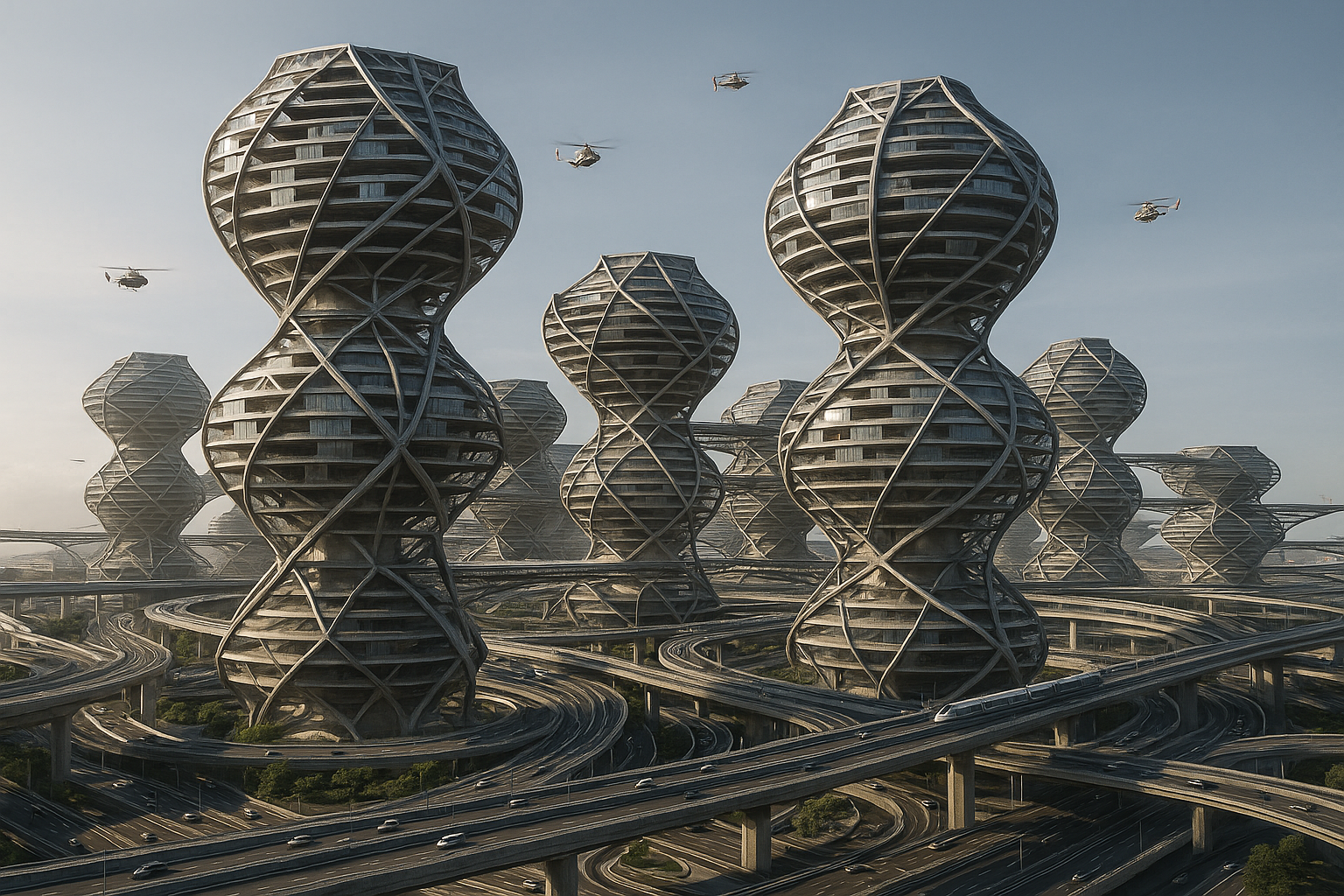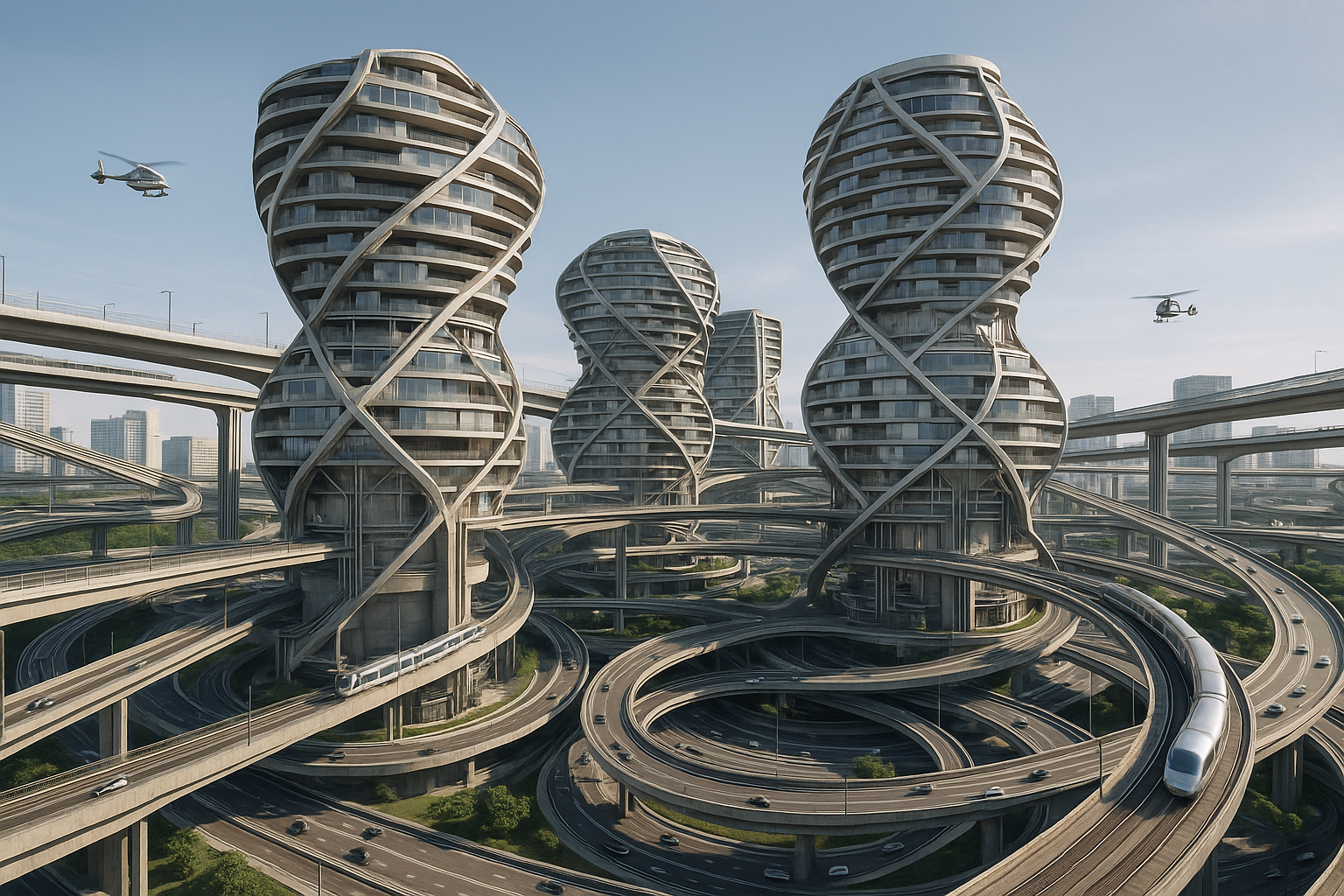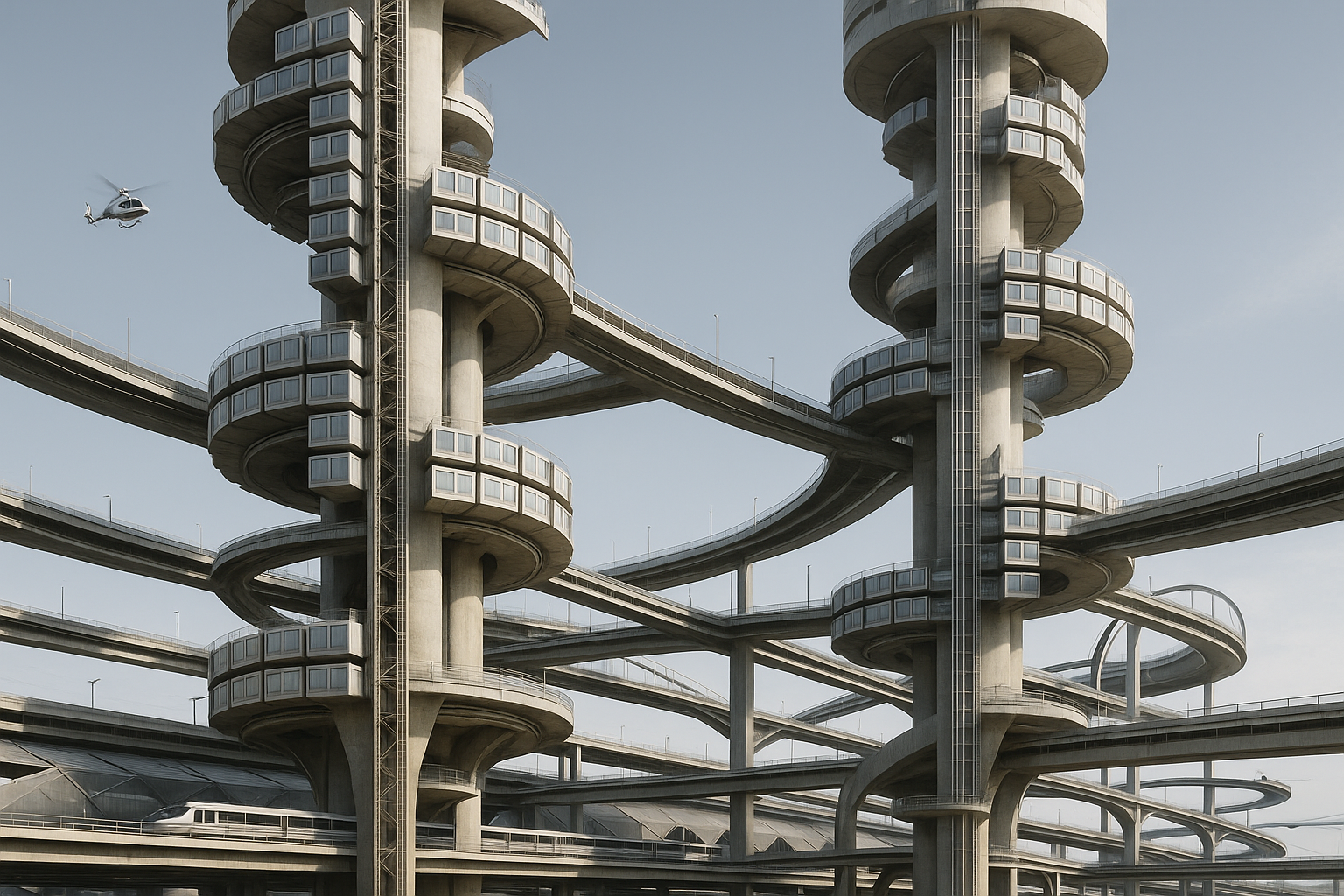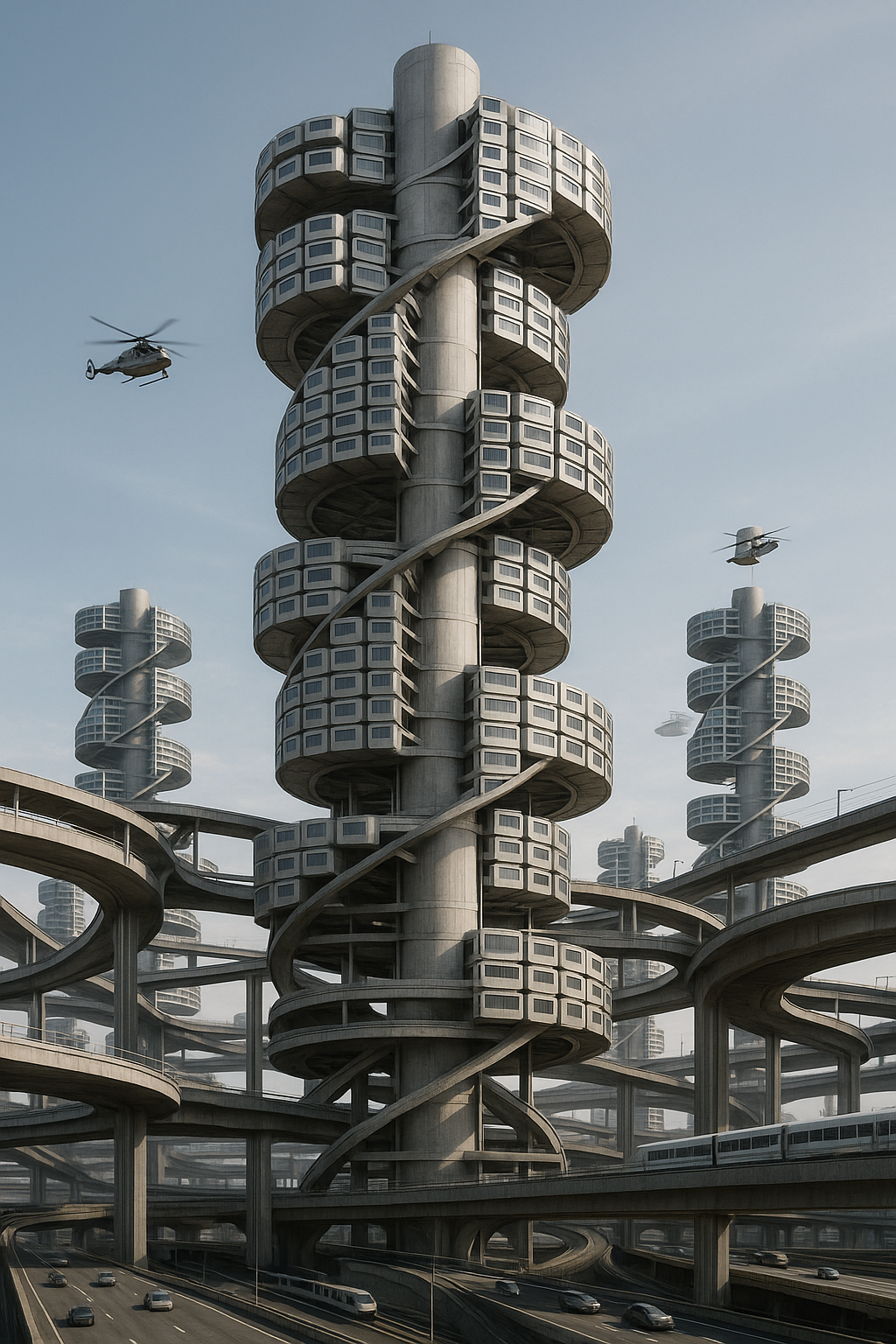Helix City de Noriaki Kurokawa
Principais características
Prompt positivo: Ultra-realistic 8K architectural visualization, eye-level perspective of Helix City, the utopian urban vision conceived by Noriaki Kurokawa in 1961. The city unfolds as a monumental double-helix megastructure, inspired by the spiraling geometry of DNA — a symbol of organic growth and continuous evolution. This structural system allows for a dynamic and articulable urban form, where modular prefabricated units are seamlessly inserted into the helices. These capsules can be expanded, replaced, or reconfigured over time, reflecting a philosophy of adaptability and impermanence.
Urban organization is achieved through vertically layered levels, enabling a flexible and scalable urban fabric. The city can manifest either as an interconnected constellation of small satellite cities or as a vast singular macrostructure, embodying the Metabolist ideals of modularity and megastructure. Captured under natural daylight with photorealistic materials — exposed steel, translucent polymers, polished concrete — the image emphasizes the visionary nature of Kurokawa’s project. The atmosphere is clear and contemplative, accentuating the rhythmic repetition of the helical form against an expansive sky, evoking a future of fluid, reconfigurable urbanism.
Prompt negativo: low resolution, futuristic sci-fi clichés, neon lighting, flying cars, dystopian, cartoon style, fantasy setting, game graphics, anime aesthetics.
Imagens produzidas pelo Chat GPT a partir de entradas de texto
Características formais
Prompt positivo: Ultra-realistic 8K architectural visualization, eye-level perspective of Helix City, the utopian urban vision imagined by Noriaki Kurokawa in 1961. The city’s structure is guided by fractal geometry — a recursive and organic pattern of spatial organization that defines both its growth and form. Towering helicoidal structures act as the vertical spine of the city, supporting suspended housing platforms and modular habitation cells. These residential units repeat rhythmically, forming a continuous chain of identical elements that echo the logic of metabolic architecture.
The entire urban composition unfolds as a series of vertically stacked and self-similar units, forming a dynamic, evolving system without fixed boundaries. Kurokawa’s experiment explores new spatial compositions aligned with Metabolist principles — impermanence, modularity, and organic expansion. Although Helix City lacks a defined geographic location, it was conceived within the framework of Japanese urban context in the early 1960s. Captured in daylight with precise material fidelity — raw concrete, brushed aluminum, transparent polymer membranes — the image highlights the intricate interplay between geometry and infrastructure. The sky remains open and neutral, framing the spiraling towers as sculptural symbols of utopian futurism.
Prompt negativo: low resolution, unrealistic proportions, sci-fi fantasy, neon colors, cyberpunk, cartoonish render, dystopian aesthetics, game graphics, anime or manga style.
Imagens produzidas pelo Chat GPT a partir de entradas de texto
Características de Infraestrutura de Mobilidade
Prompt positivo: Ultra-realistic 8K architectural visualization, eye-level perspective of Helix City, the utopian urban vision imagined by Noriaki Kurokawa in 1961. The city is defined by an intricate network of helicoidal towers seamlessly integrated with its circulation system, forming a singular connective urban mesh. Designed with complexity and precision, the city’s multi-modal transportation infrastructure incorporates automobiles, trains, elevators, and underground metro lines into a continuous and organic flow.
Airborne above the city, helicopters envisioned by Kurokawa add a vertical dimension to movement, reinforcing the three-dimensionality of the urban plan. Highways, elevated roads, train tracks, and subterranean lines are articulated around and through the spiraling towers, allowing for uninterrupted mobility across the entire megastructure. This integrated network is not only a system of movement but also houses the city’s full infrastructure — power, water, communication, and waste management — embedded within the architecture itself.
Rendered with photorealistic textures — steel, concrete, polycarbonate, and glass — under natural daylight, the image captures the visionary fusion of movement, structure, and metabolism in a futuristic yet grounded Japanese context.
Prompt negativo: Low resolution, cyberpunk neon, dystopian setting, fantasy elements, cartoon style, unrealistic sci-fi vehicles, exaggerated proportions, retro-futuristic aesthetic.
Imagens produzidas pelo Chat GPT a partir de entradas de texto
Características Espaciais e Funcionais
Prompt positivo: Ultra-realistic 8K architectural visualization, eye-level perspective of Helix City, the utopian urban vision imagined by Noriaki Kurokawa in 1961. The city’s housing is structured through a system of modular habitation cells, arranged within a spatial network defined by precise articulation points. At these nodal intersections, vertical and horizontal circulation systems converge — forming an intricate web that integrates elevators, walkways, and transport corridors.
The cells themselves are compact and prefabricated, suspended or anchored to helicoidal towers, embodying Kurokawa’s Metabolist ideals of modularity, adaptability, and organic urban growth. The articulated nodes serve as connective hubs, visually and functionally linking the various layers of the city. Captured under natural daylight with photorealistic textures — exposed concrete, matte steel, translucent composite panels — the image evokes the rational yet visionary nature of this vertical utopia. The atmosphere is calm and balanced, emphasizing the harmony between structure, circulation, and living space.
Prompt negativo: low resolution, neon lighting, sci-fi clichés, cartoon style, dystopian elements, fantasy textures, retro-futuristic exaggerations, anime style.
Imagens produzidas pelo Chat GPT a partir de entradas de texto
Todos os prompts anteriores.
Prompt positivo: Ultra-realistic 8K architectural visualization, eye-level perspective of Helix City, the utopian urban vision conceived by Noriaki Kurokawa in 1961. The city unfolds as a monumental double-helix megastructure inspired by the spiral geometry of DNA — a metaphor for organic growth and continuous evolution. This articulated system hosts modular prefabricated capsules that can be seamlessly inserted, expanded, or replaced, embodying the Metabolist principles of impermanence and adaptability.
Urban organization is layered vertically, allowing a flexible, scalable spatial fabric. The city manifests either as a constellation of interconnected satellite cities or as a singular macrostructure. Its form is governed by fractal geometry — a recursive, organic logic that shapes both spatial growth and architectural expression. Towering helicoidal structures serve as the vertical spine of the city, supporting suspended housing platforms and rhythmically repeating habitation cells in continuous chains.
Circulation is fully integrated into the urban framework. Roads, elevated highways, rail lines, subways, elevators, and pedestrian walkways converge at articulation nodes, forming a dense connective mesh. Helicopters envisioned by Kurokawa hover above, reinforcing the three-dimensionality of the transportation network. This infrastructure not only supports movement but also houses essential urban systems — power, water, waste, and communication — embedded within the architectural structure itself.
Each residential module is compact and prefabricated, anchored or suspended from the spiraling towers. The nodes where vertical and horizontal circulation intersect serve as hubs for connection, layering function and form. Captured under natural daylight with photorealistic textures — exposed concrete, brushed aluminum, translucent polymer membranes, steel, and glass — the image evokes a contemplative, balanced atmosphere. Against an expansive, neutral sky, the helicoidal towers rise like sculptural monuments of utopian futurism and metabolist urban design.
Prompt negativo: low resolution, sci-fi neon, cyberpunk style, dystopian setting, anime or cartoon aesthetics, fantasy elements, unrealistic proportions, game-style graphics.
Imagens produzidas pelo Chat GPT a partir de entradas de texto
